holy land V - church of the holy sepulcher

i'm back from vacation!
I apologize in advance for my low-quality photography. Just to warn you: it doesn't get any better as my trip goes on! It's been a long while since my last post, but alas, I've been blissfully away from internet technology. It was wonderful, but all good things must come to an end.
This is my fifth major post about my time in Israel, but we've only made it to the second half of the second day! I'll try to pick up the pace, but there's just so much to cover (and from your feedback, it seems that you're having as much fun reading about Israel as I am writing).
church of the holy sepulcher
I'm an engineer, so I'm used to using acronyms. "Church of the Holy Sepulcher" takes a long time to write, so I'll call it the CHS. I just don't want you to confuse it with the Center for Health Statistics, a cardiovascular health study, or any number of high schools that start with "C."
To begin, the CHS is extremely important to Christians. There are some places that Jews, Muslims, and Christians all share, but this isn't one of them. This one is just for Christians. Unfortunately, history shows that different groups of Christians get along as well with each other as candles do with gunpowder.
That's where the Status Quo comes in. The Status Quo is more than just a casual agreement. It legally binds Jews, Muslims, and six different Christian groups to work together to preserve nine specific holy sites spanning between Jerusalem and Bethlehem. The Status Quo dates back to 1757 and was recently recognized and upheld by the United Nations. It's a pretty big deal.
So what happened before the Status Quo came along? Well, you've heard of the Crusades. The Roman Catholic Church fought the first crusade in part to gain control over the holy sites of Jerusalem (including the CHS which began its construction by commission of Emperor Constantine and his mother in the year 326). Later on, the Islamic Ottoman Empire took over. At that point, the Roman Catholic Church and the Eastern Orthodox Church started competing with the Sultan (the leader of the Ottoman Empire) for his favor. When (or if) the Sultan favored one of the groups, he would give that group access to the holy sites within his territory.
The CHS is one of those Christian holy sites. Many historians think that the Church of the Holy Sepulcher is the location of Jesus' death and the tomb where he was buried. That tomb, of course, is still empty.
I'll avoid most of the historical details from here on (since they're widely available online) to focus on my own personal experience. When I think about visiting a holy place, I imagine solemnity, respect, cleanliness, and harmony. The CHS was none of those things. It contains the last stops on the Via Dolorosa (which I've touched on before and will talk about later). When you reach the end of the road, you're confronted with this busy scene:
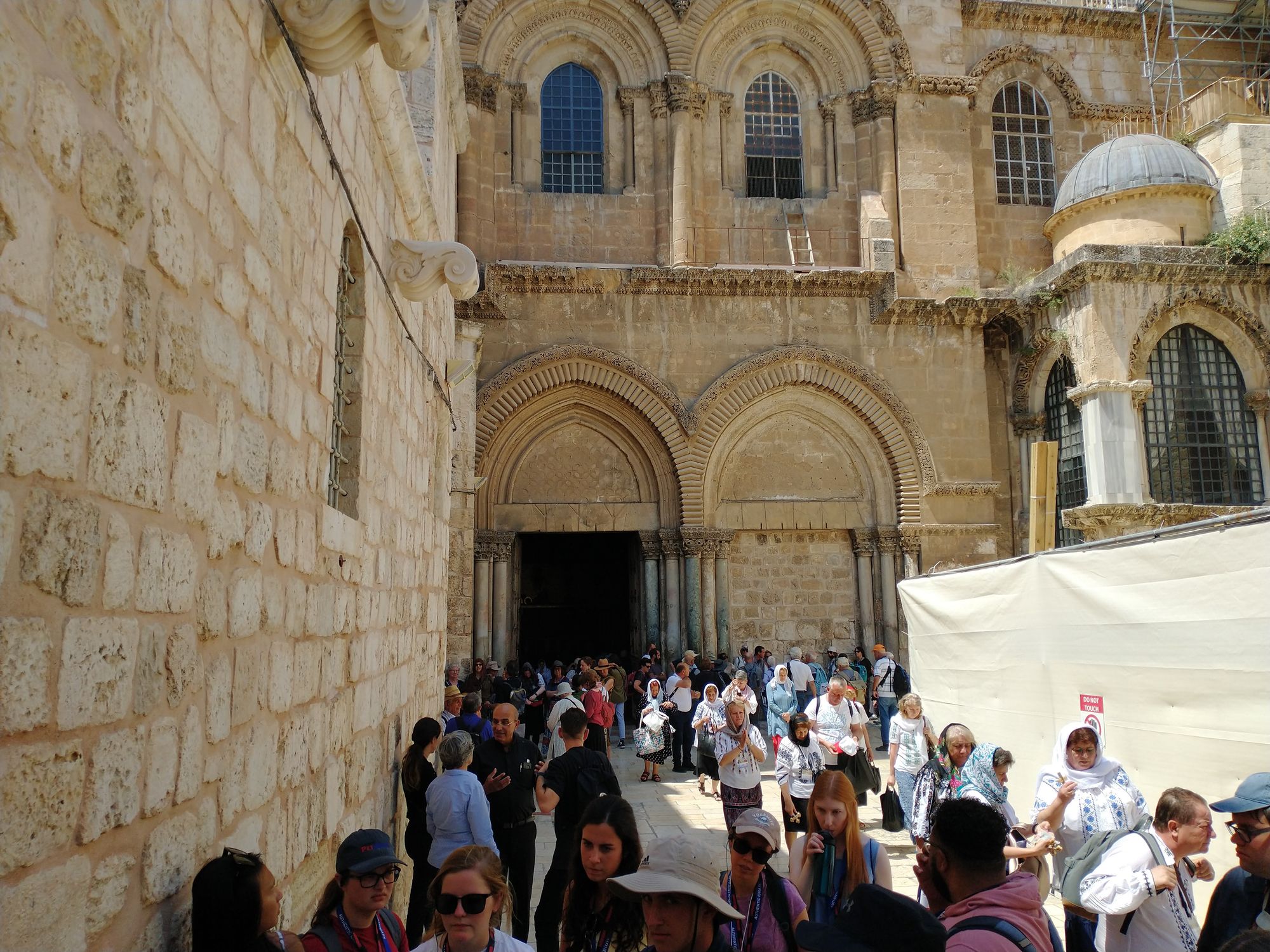
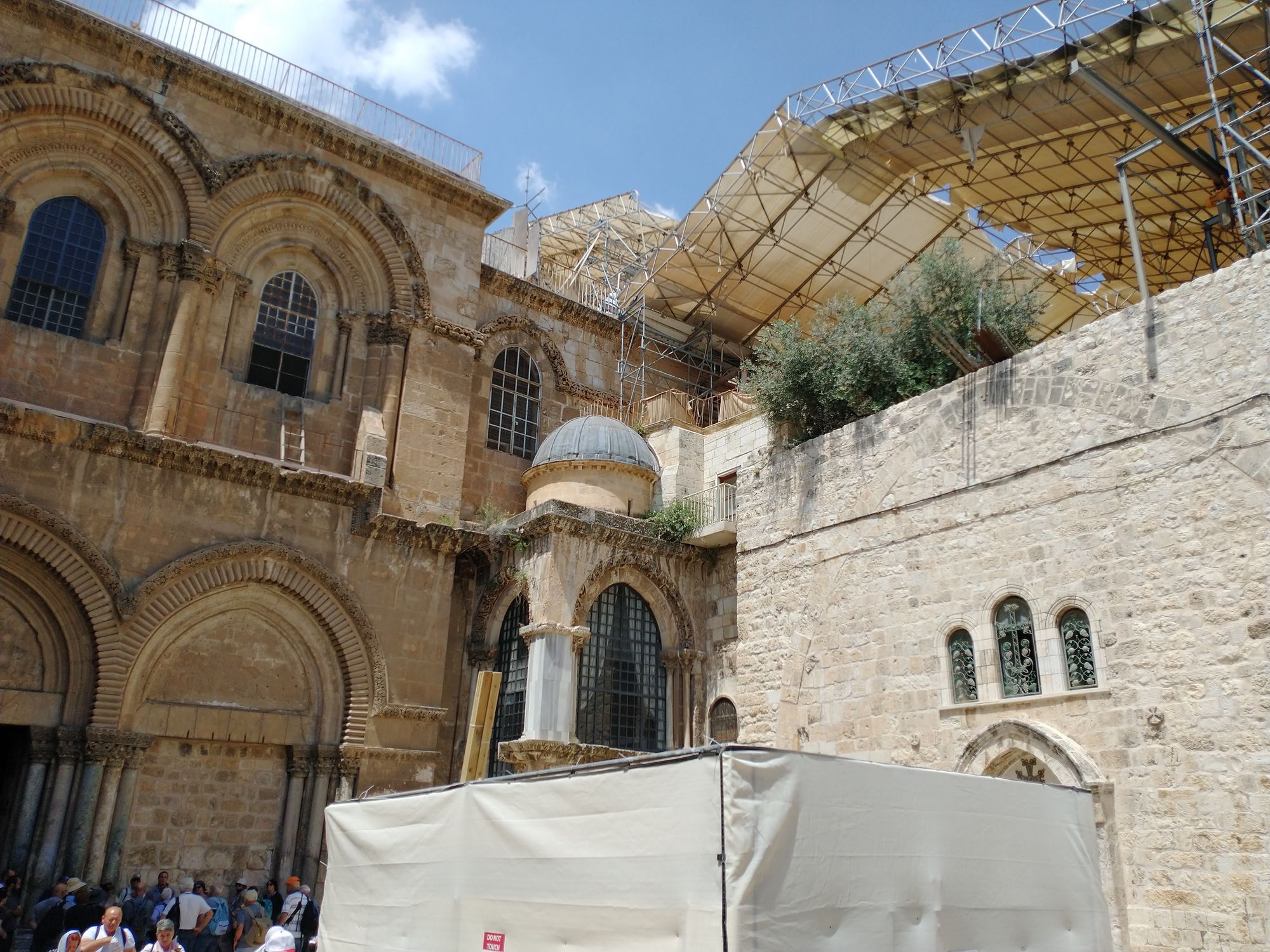
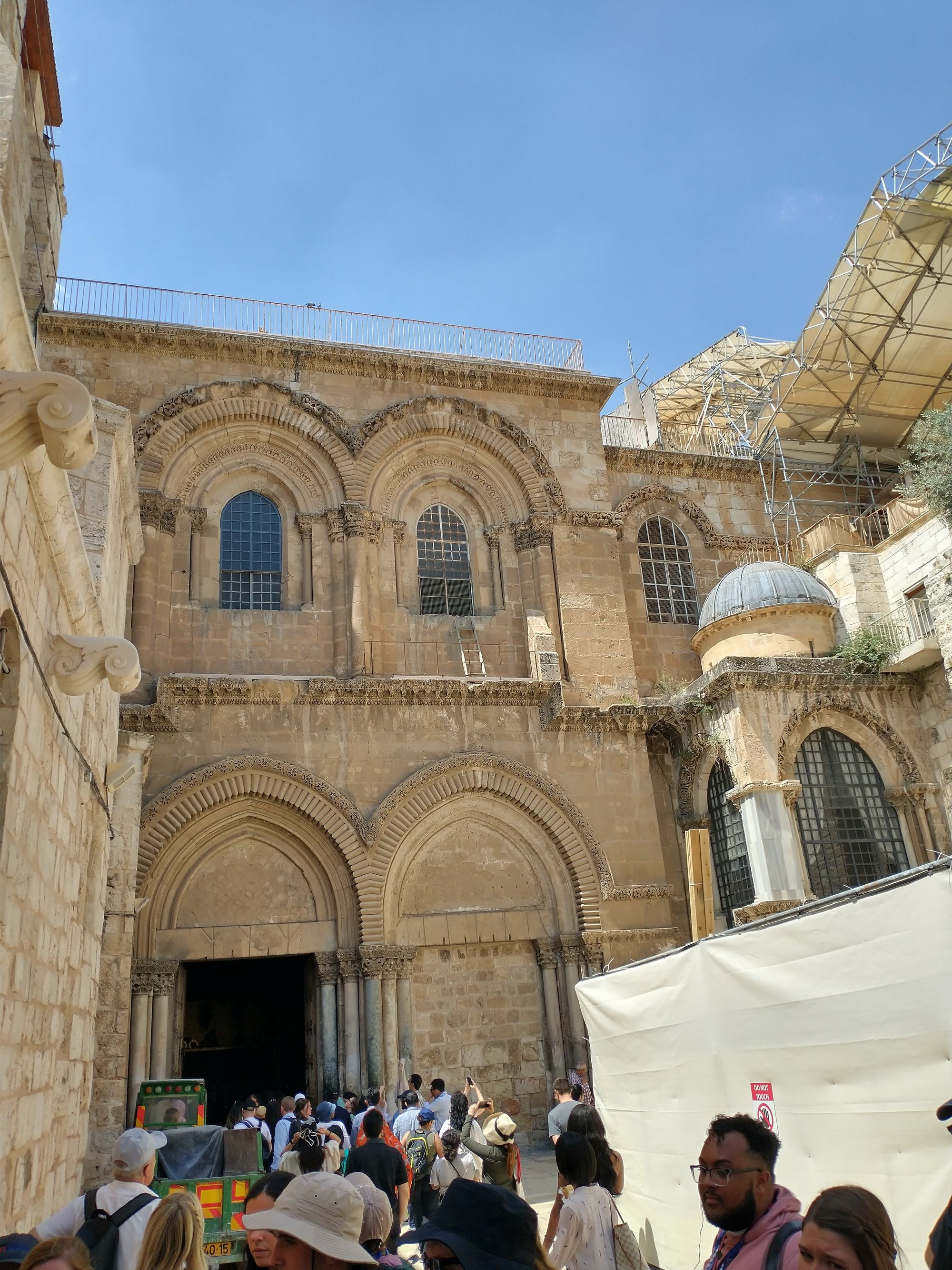
Yes, that's the main entrance to the most important historical site in the world. In the upper part of the building, you can see a ladder. Like any relic of a holy site, it has a name. They call it, The Immovable Ladder. Many consider it a powerful symbol of human conflict and "brothers-hating-brothers," so clearly people want it to be visible as you enter a beautiful cathedral. It's a mess. Through the entire tour, the sights constantly went from amazingly beautiful to pathetically sad (but I'll try to focus on the good).
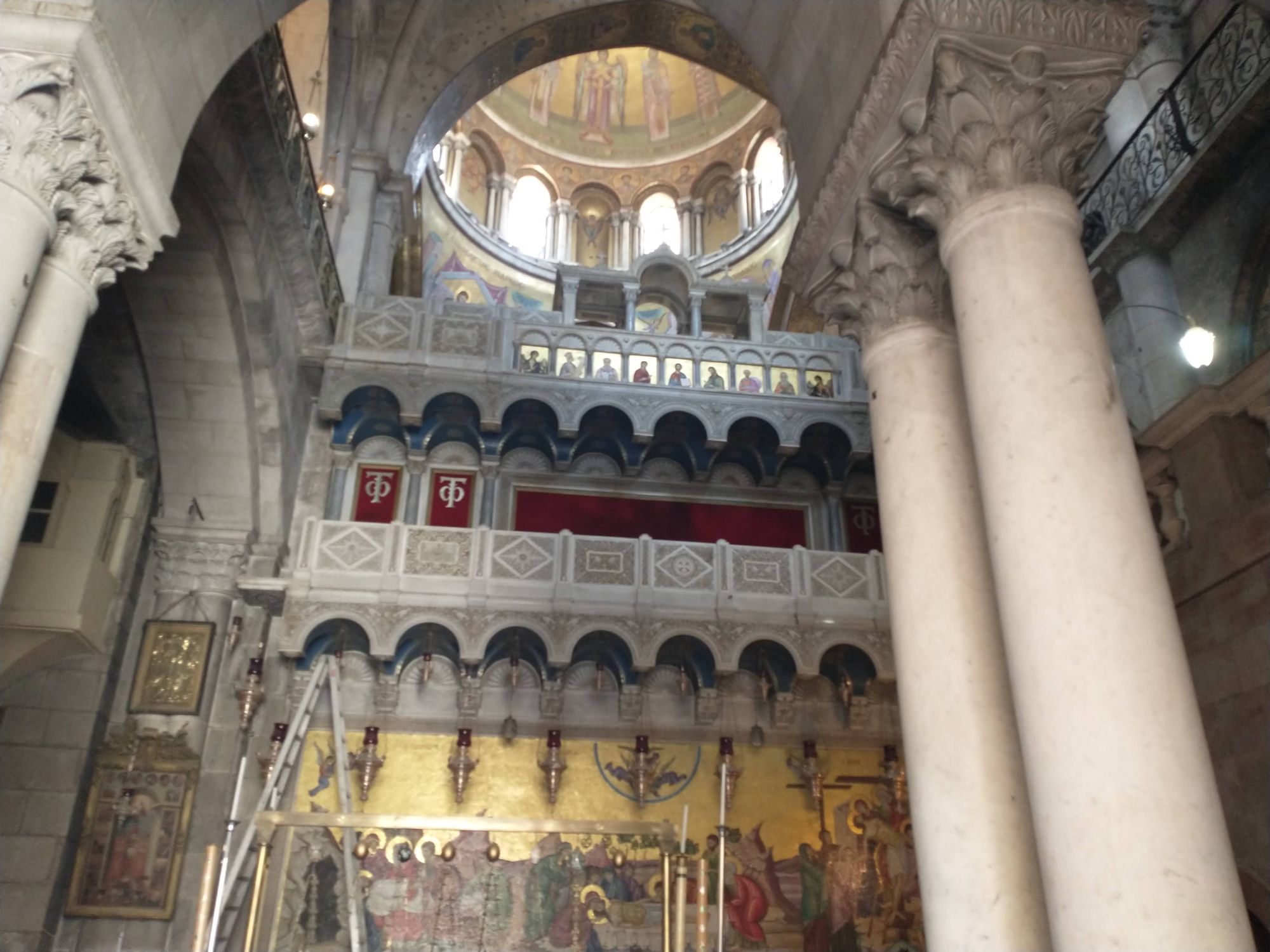
As you enter, you're met with beautiful mosaics that are obscured by construction equipment. Next, turn to your right to walk up to Golgotha, the place where Jesus was murdered by the political and religious elite. You can try to imagine what it was like for him as he was nailed to the cross. To help you focus your mind, there are some very nice mosaics. As the story goes, two criminals were crucified next to Jesus. One on the left and one on the right. Here are some pictures of the left side. This part of the church is managed by Catholic Christians.
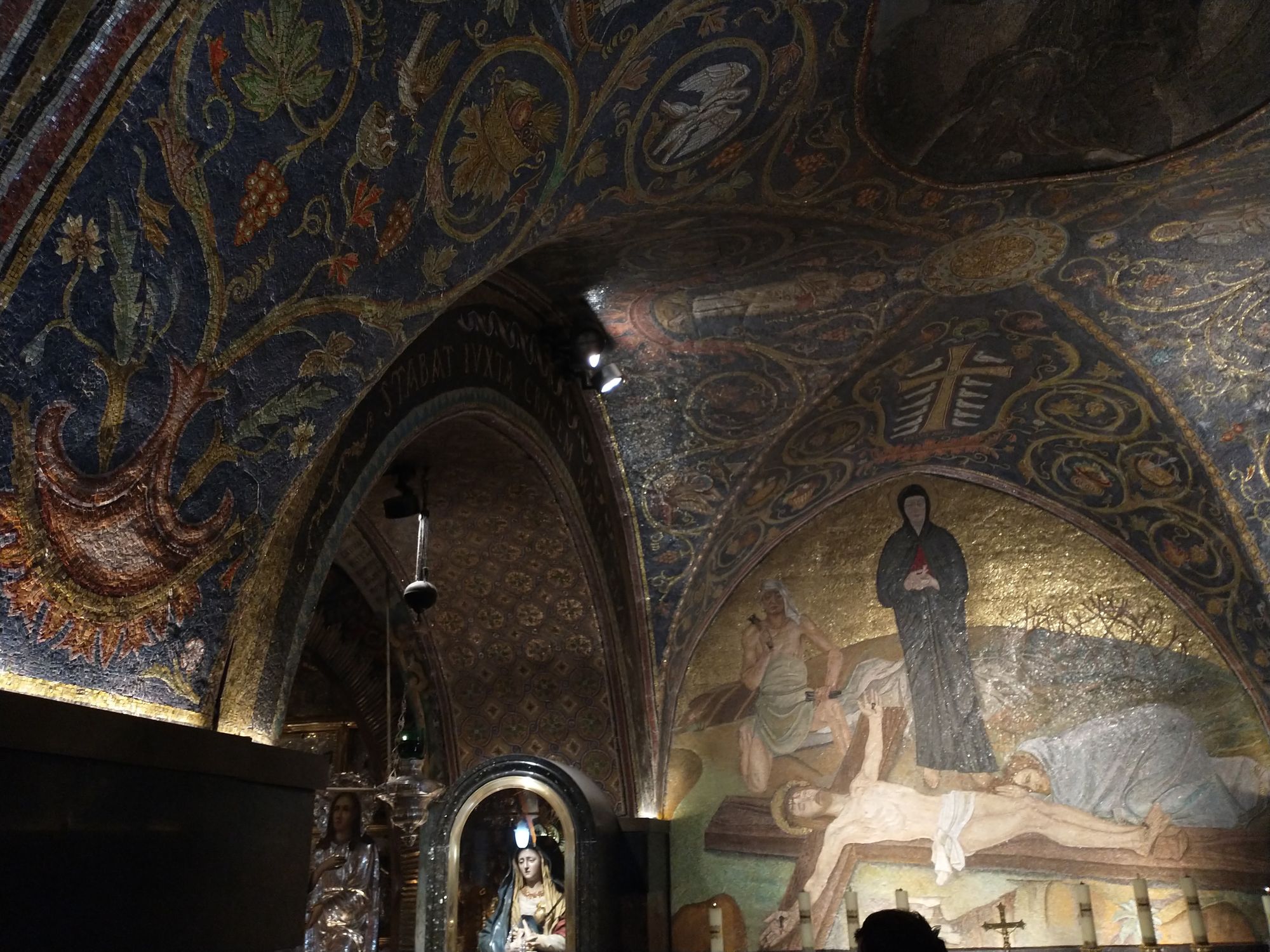
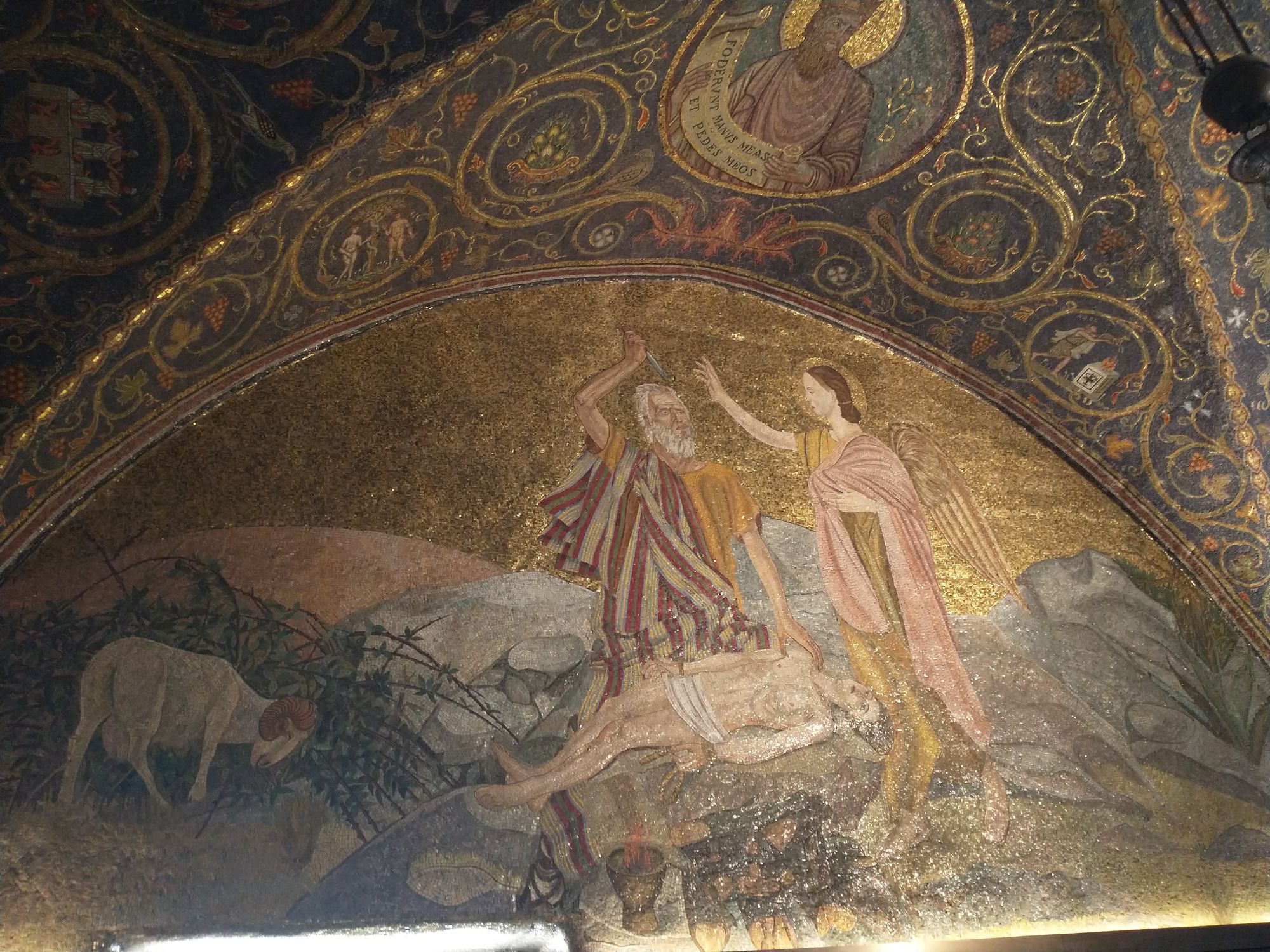
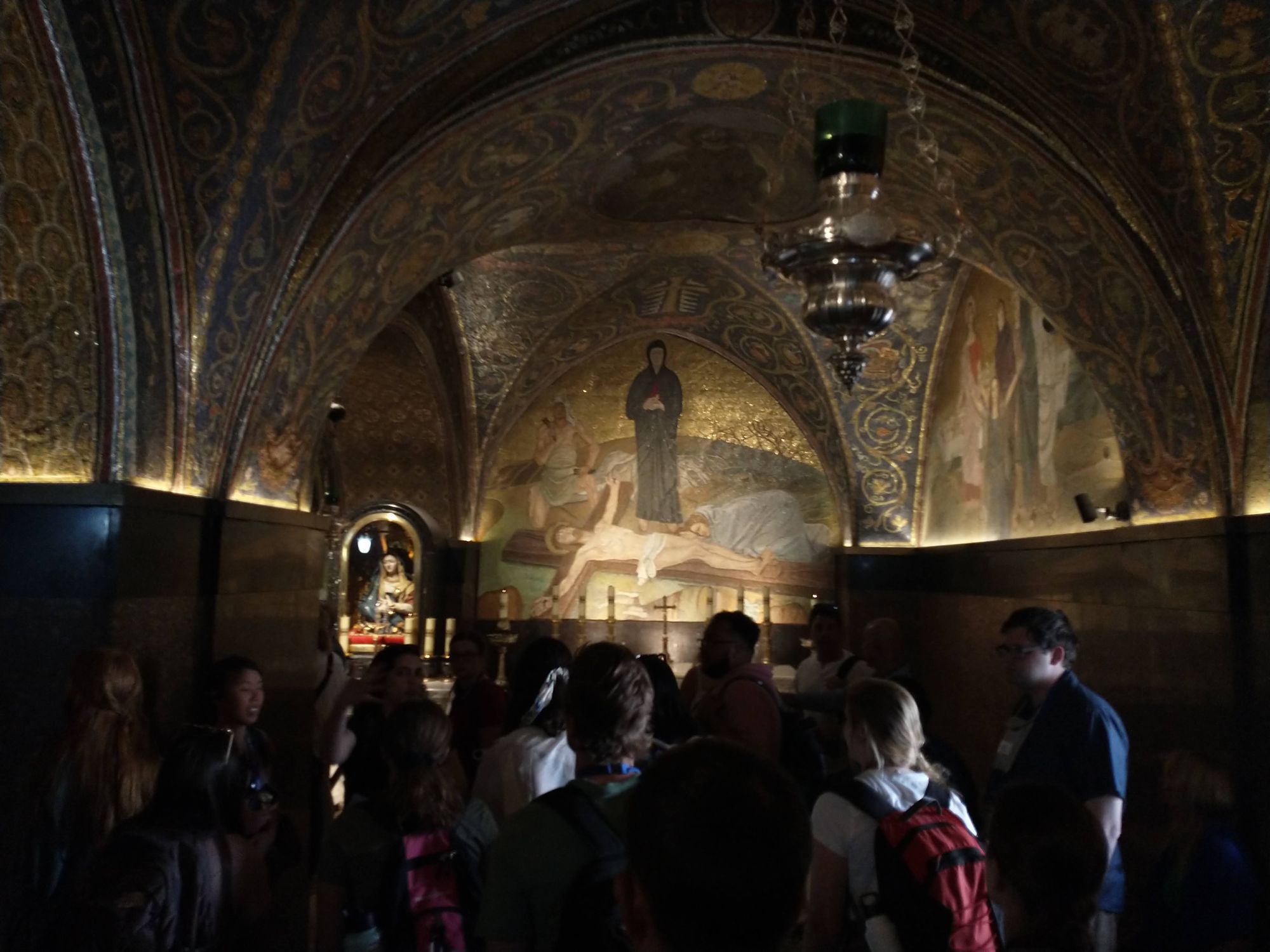
Next you have the exact place where, according to most tradition, Jesus was actually killed. That part of the church is controlled by Orthodox Christians:
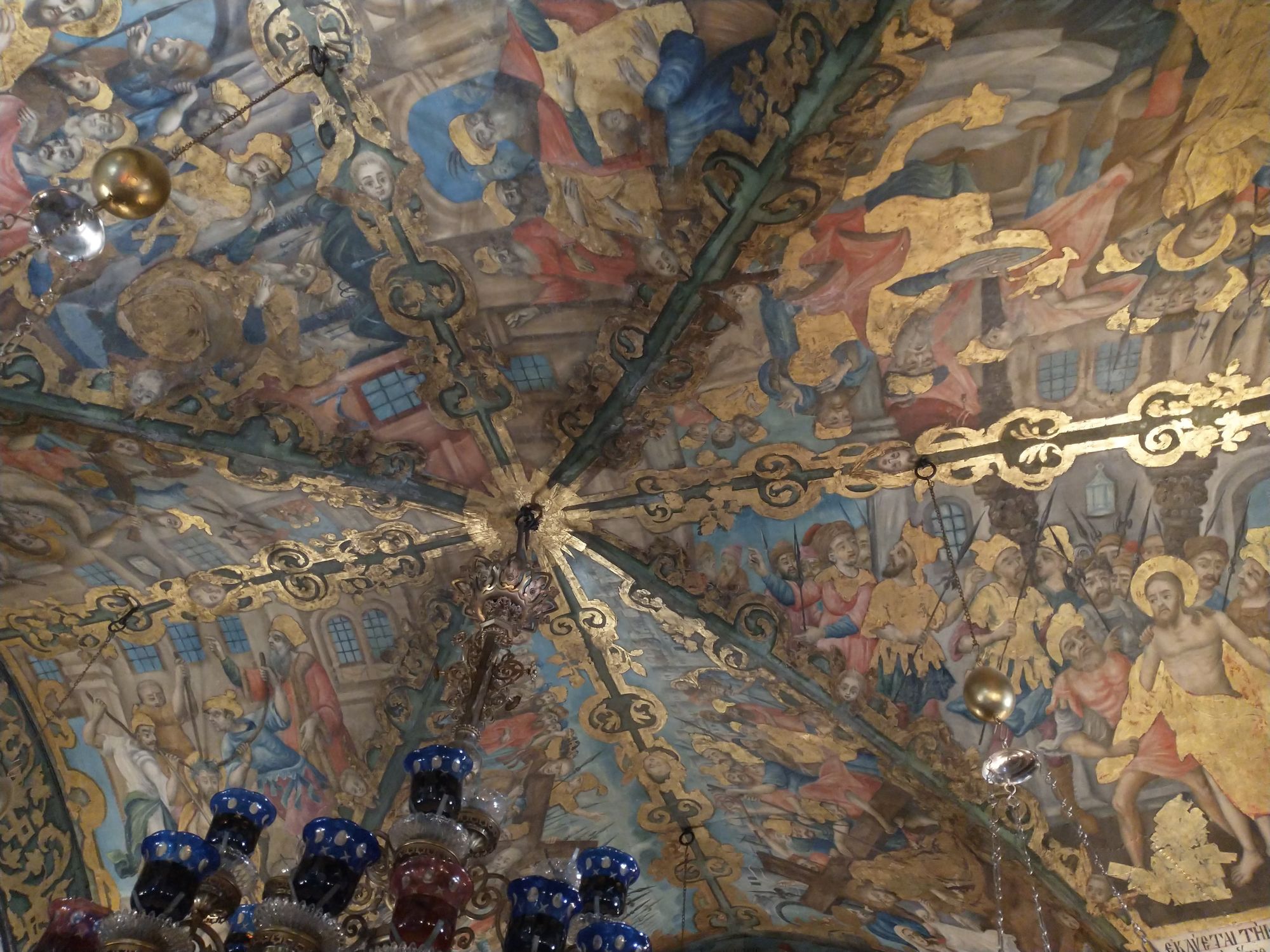
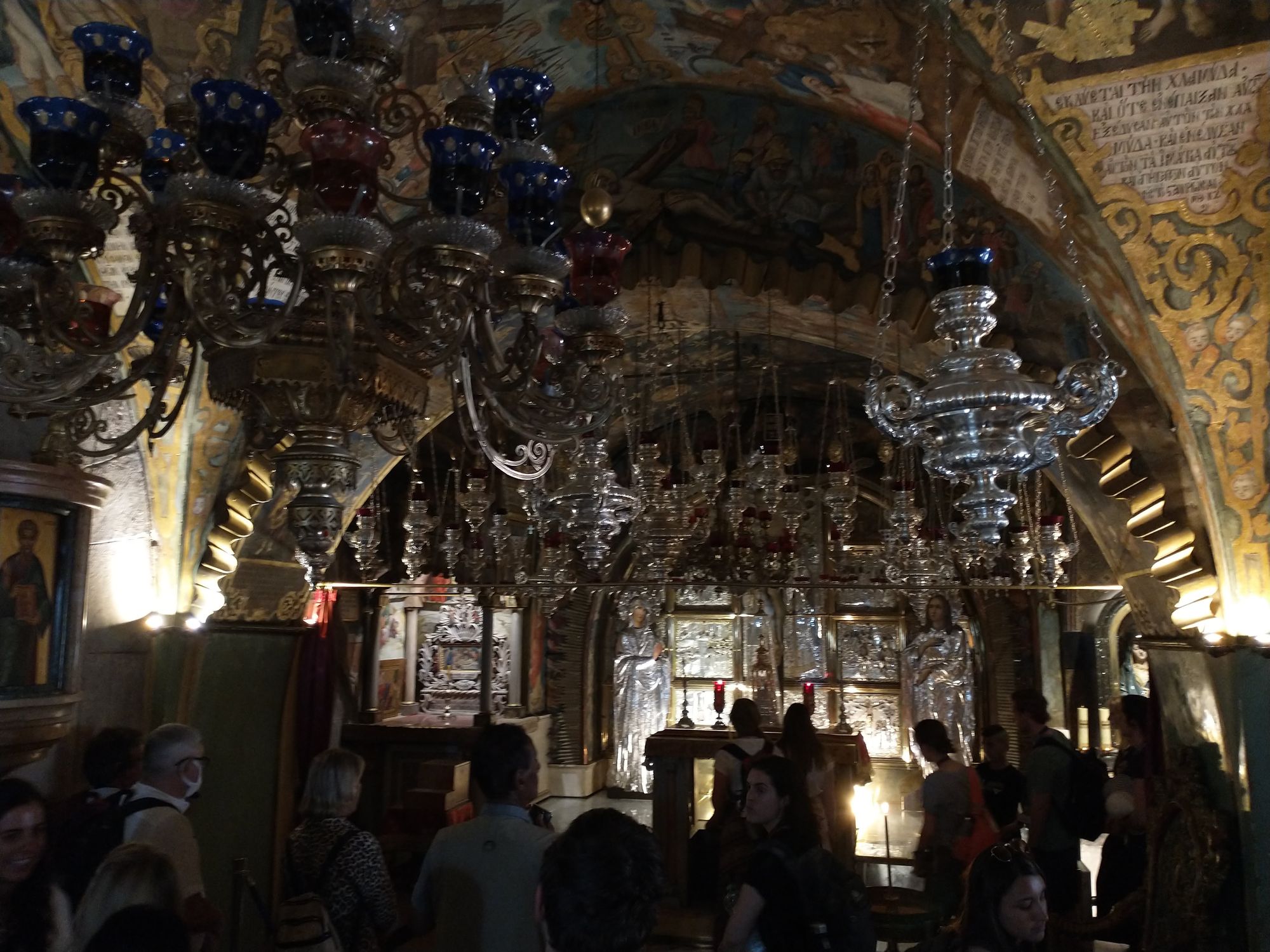
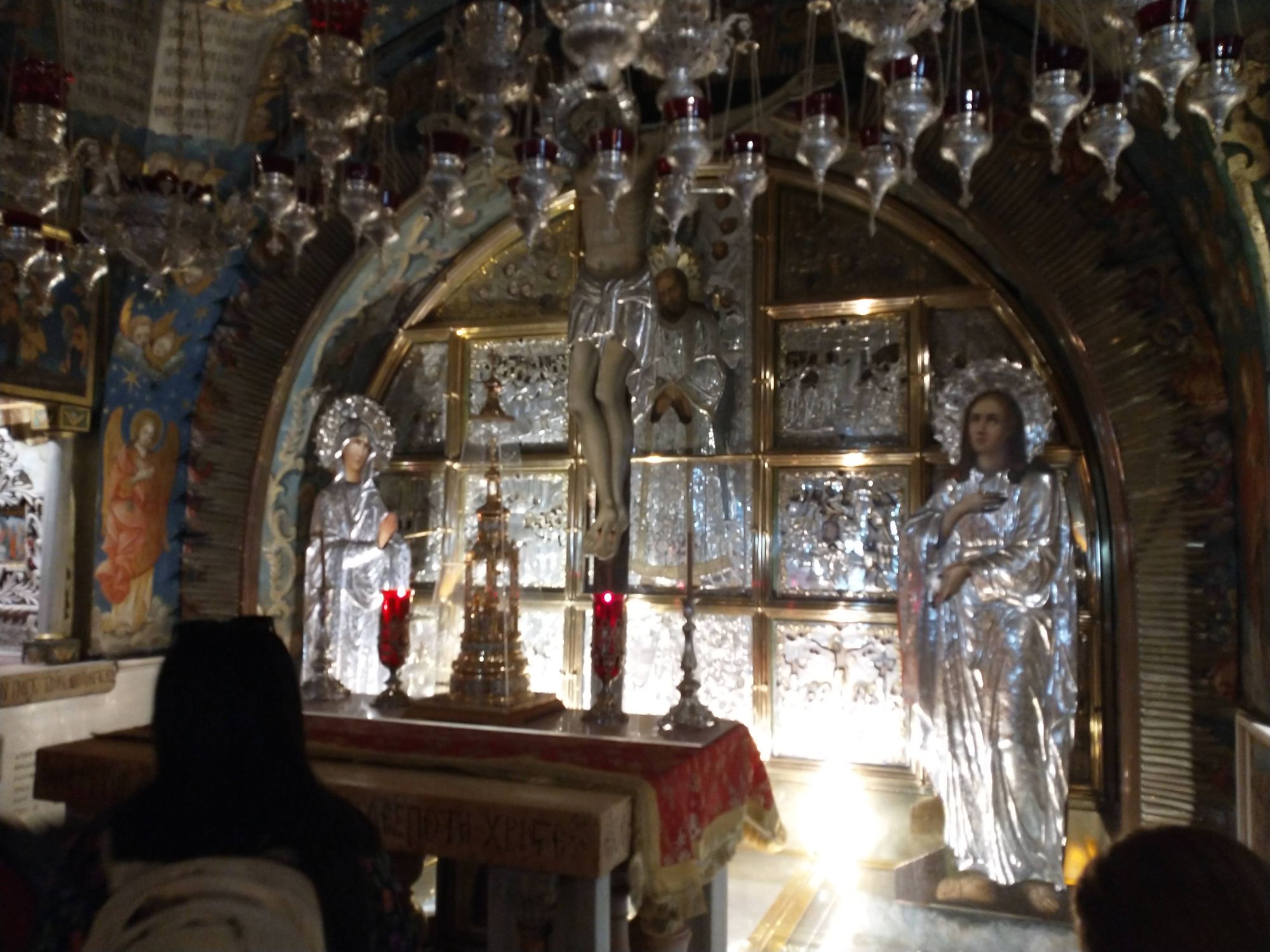
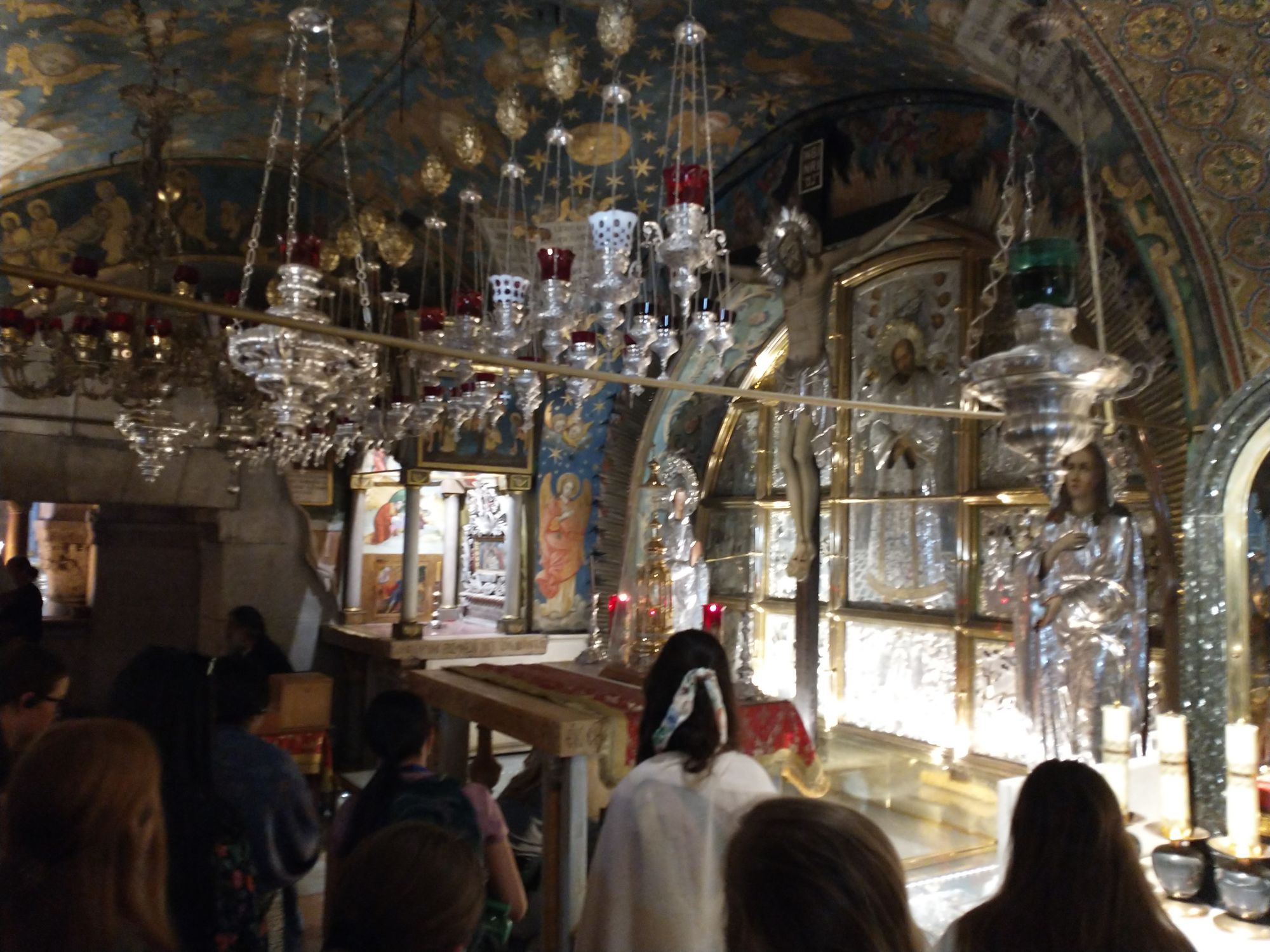
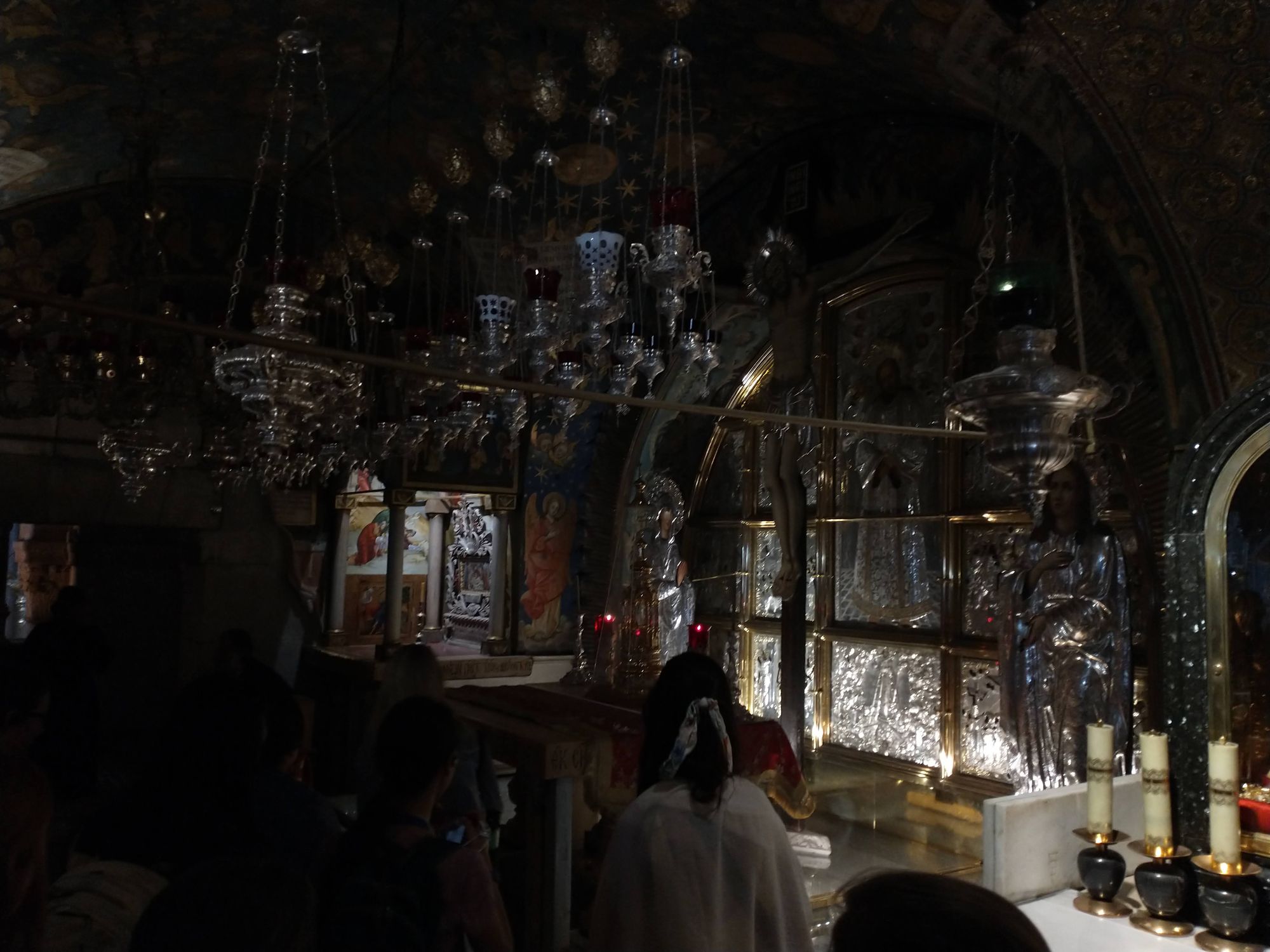
For my readers from western culture, you'll probably find the Orthodox decorations a little more ornate than you're used to. Hundreds of years ago, they chose to honor this very holy site with enormous sacrifice to themselves: they covered as much of it as possible with finely worked, pure silver. The rest is covered in costly mosaics. This is their way of honoring the memory of Jesus' sacrifice.
Under the altar you see in my blurry photos, the tourists can kneel to touch the exact spot where some people believe Jesus' cross actually stood (but that exact spot isn't supported by historical record. It comes from tradition). Of special note, anyone can touch it. It would also be considered offensive to immediately sanitize your hands after touching it.
Once you've taken a few seconds to venerate our most holy Lord and Savior and meditate upon his painful sacrifice, you leave through another Catholic-controlled section of the church to observe something I never could have imagined:
That's a tractor driving through the Armenian section of the church to repair part of the Orthodox section of the church. The thing you see to the left of the tractor is the Stone of Anointing. It's the stone that some traditions believe is the place where Jesus' body was prepared, but that claim isn't supported by archaeological or scriptural evidence (it's most likely that Jesus' body was prepared in the tomb on a special platform within the tomb itself which you can still see today at a different site that's less likely to actually be Jesus' tomb).
If you follow the tractor, you get to see some of the beautiful Armenian sections of the church:
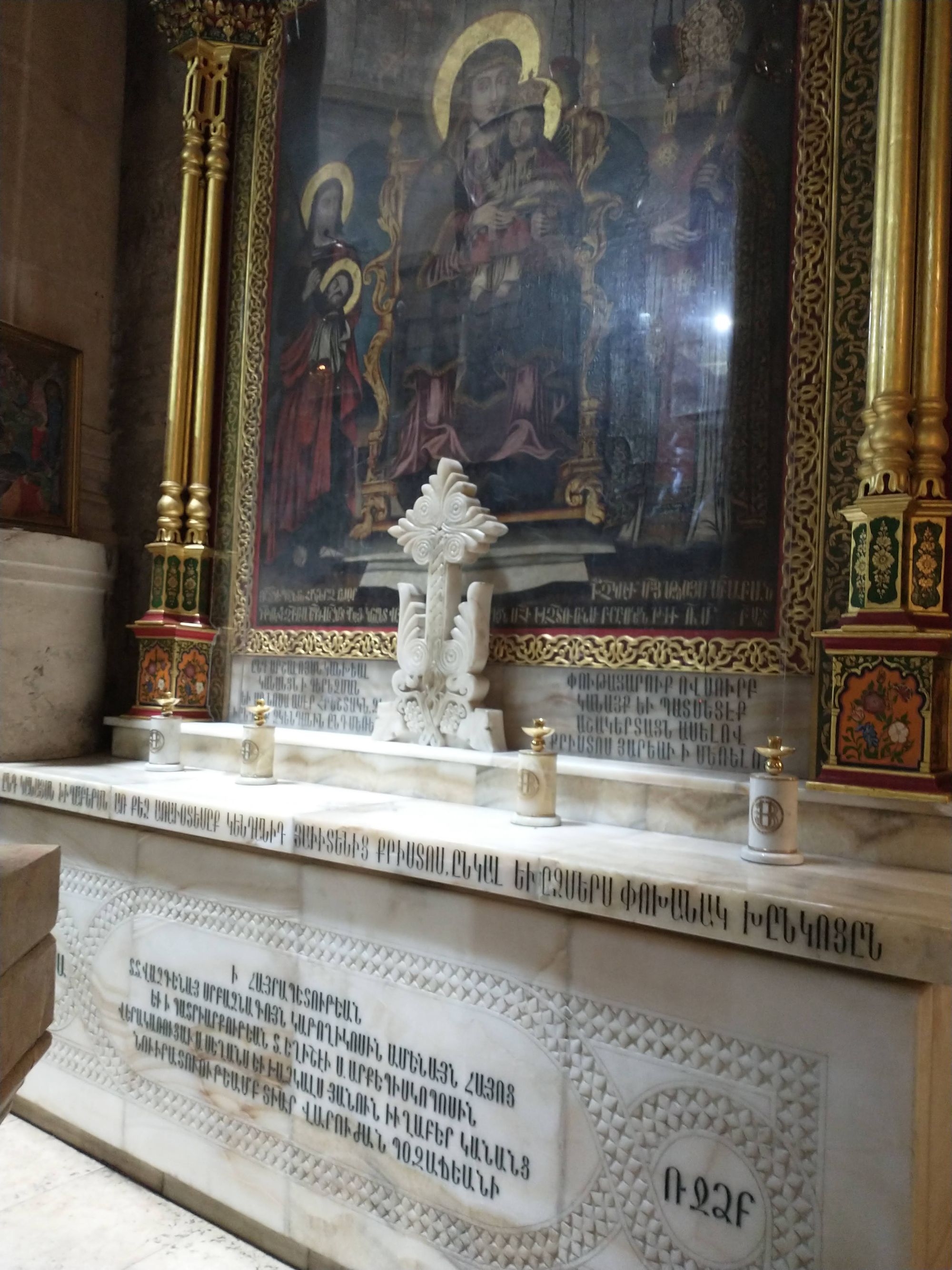
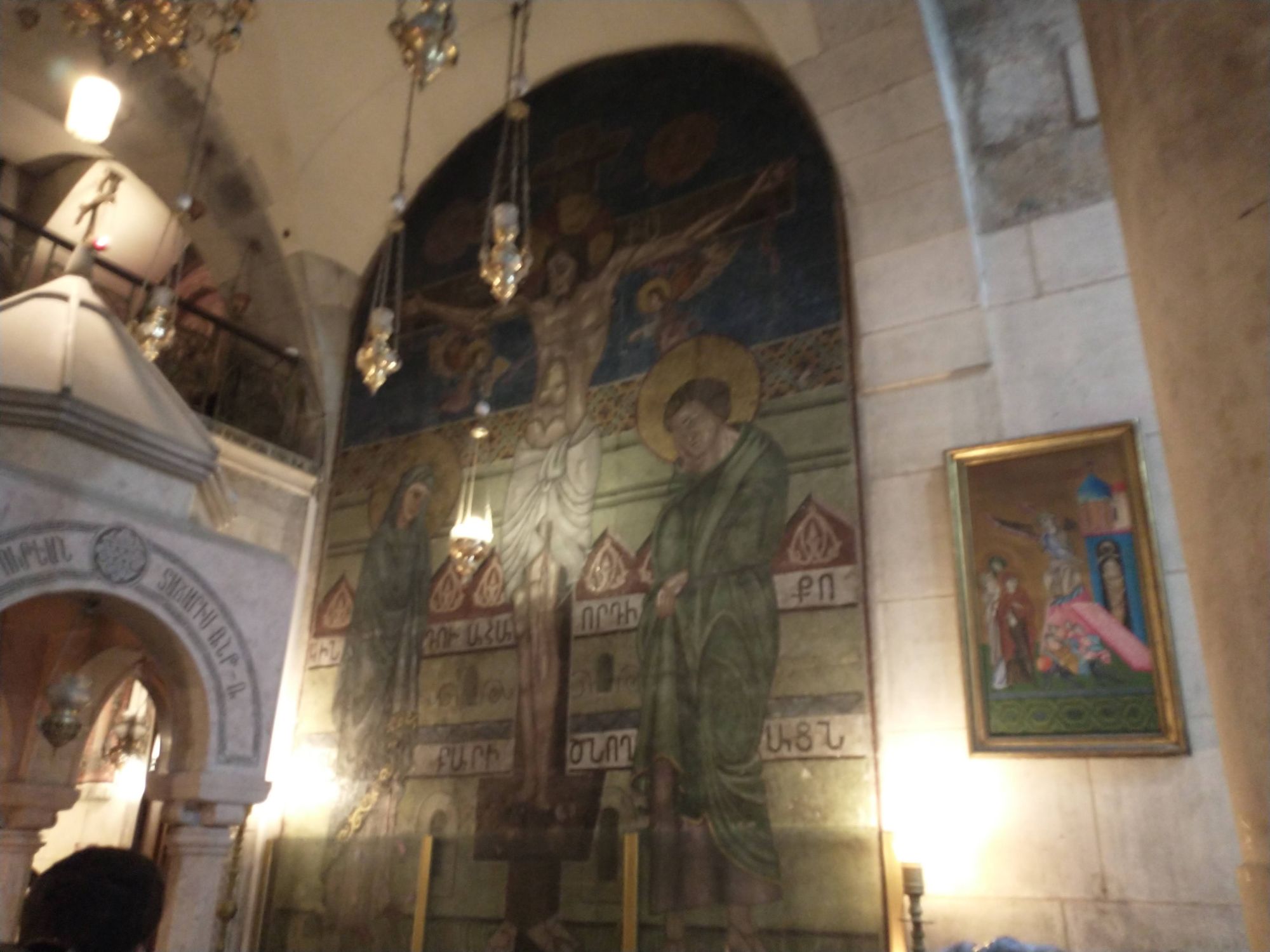
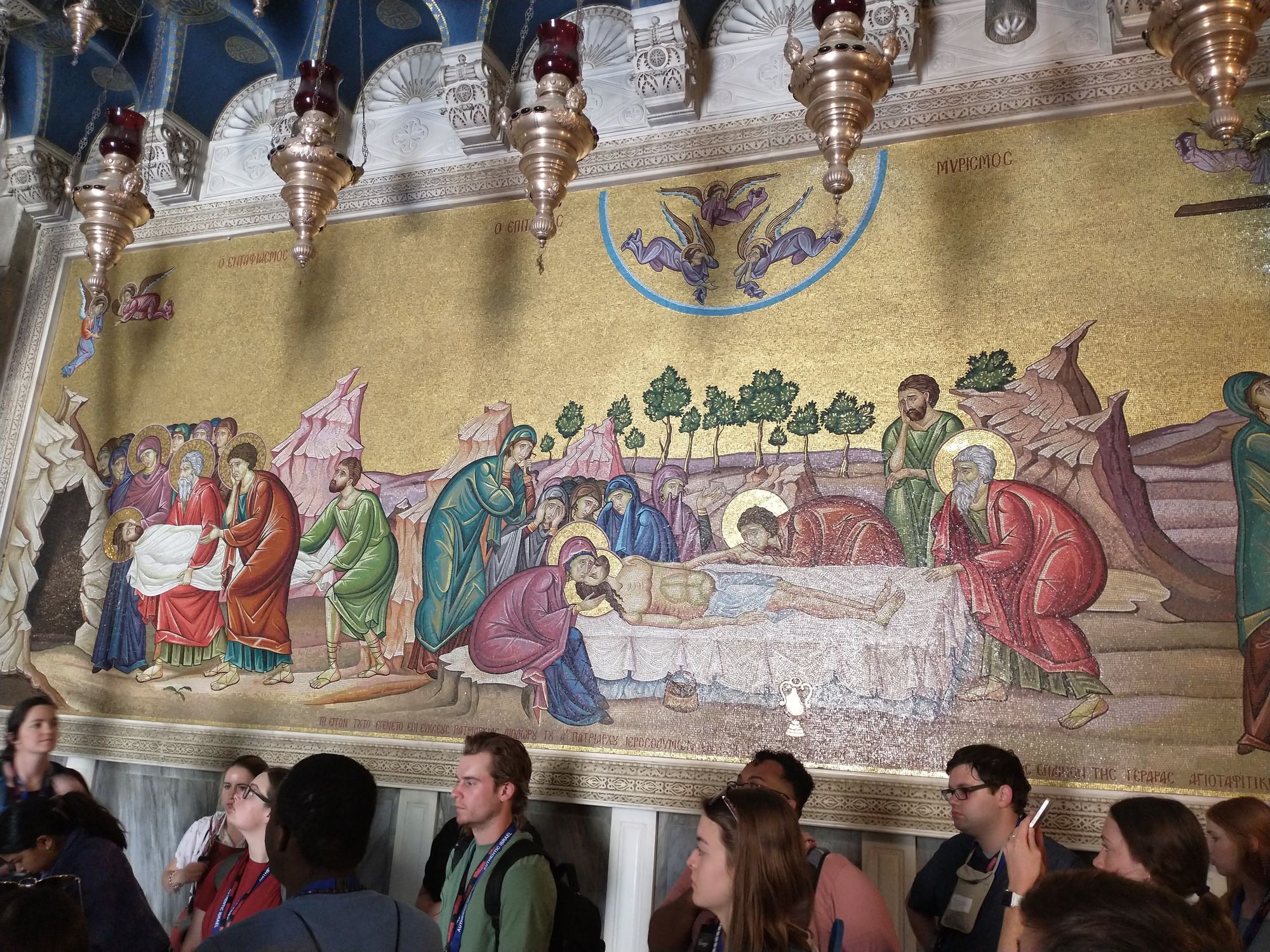
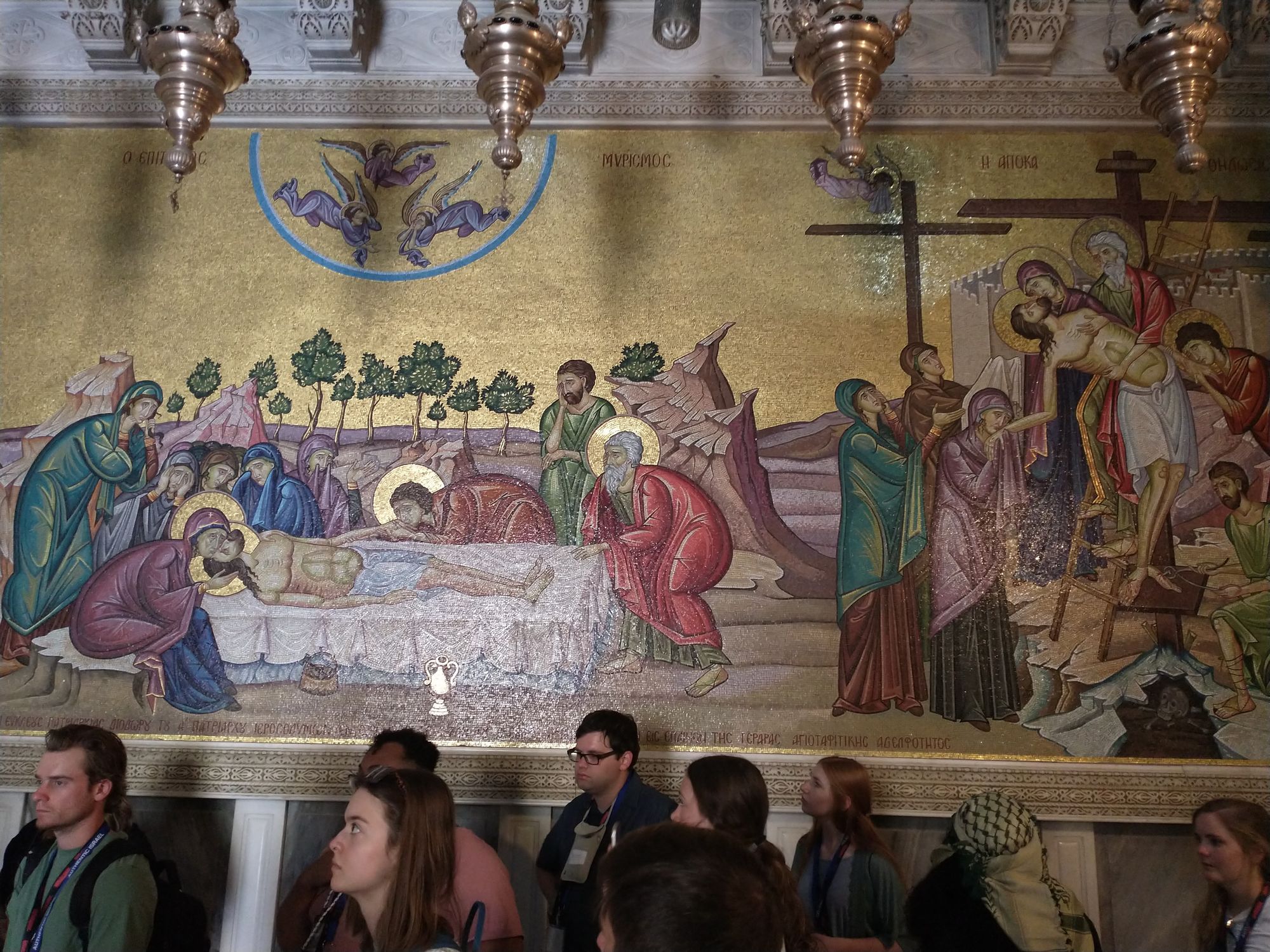
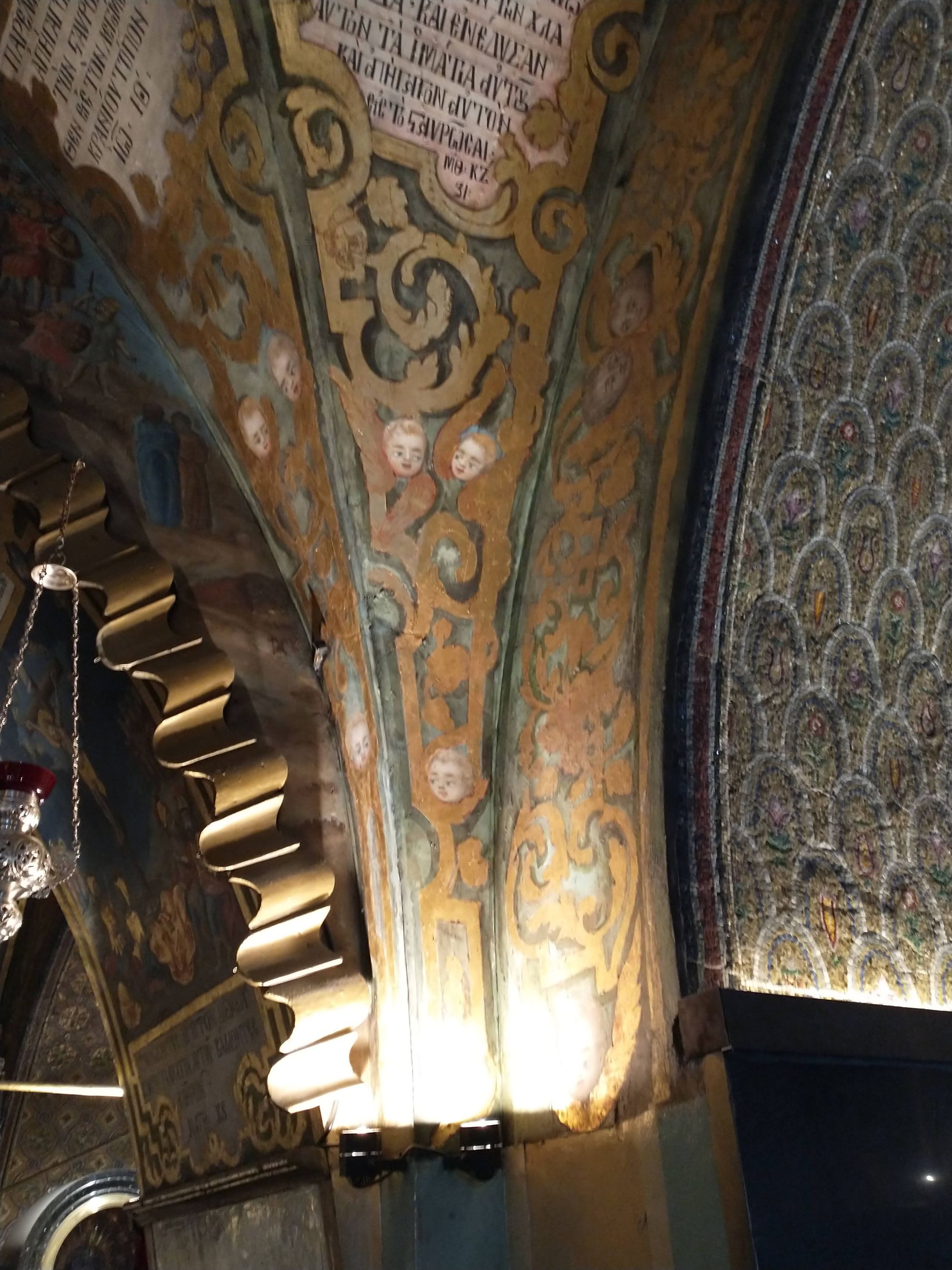
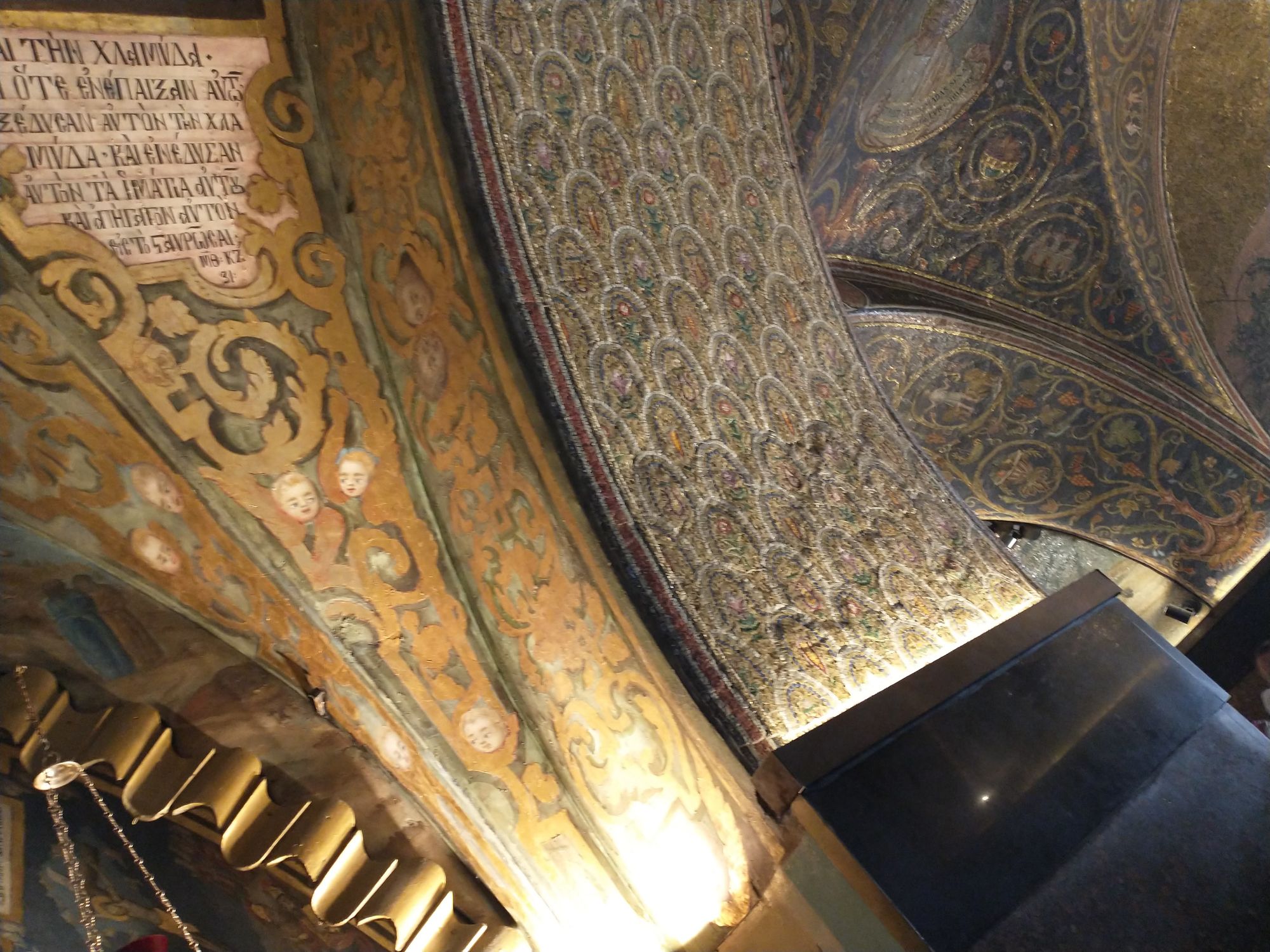
For those wondering why the Armenian church has such a large role at the Church of the Holy Sepulcher, you're not alone. To make a long and complicated story very short and simple, I'll just say that they managed to stay unified and peaceful enough to take care of certain parts of Jerusalem, including the Church of the Holy Sepulcher, while all the other Christians were fighting against each other. To this day, that section of Jerusalem is referred to as the Armenian Quarter.
Once out of the Armenian section of the church, you enter the famous rotunda where you can find Jesus' tomb. To call it crowded would be an understatement! It was packed full, wall to wall, like a can of sardines. That's why I couldn't get many pictures. It was so crowded, in fact, that we didn't take the tour through the tomb. Not exactly what I'd call a sacred experience.
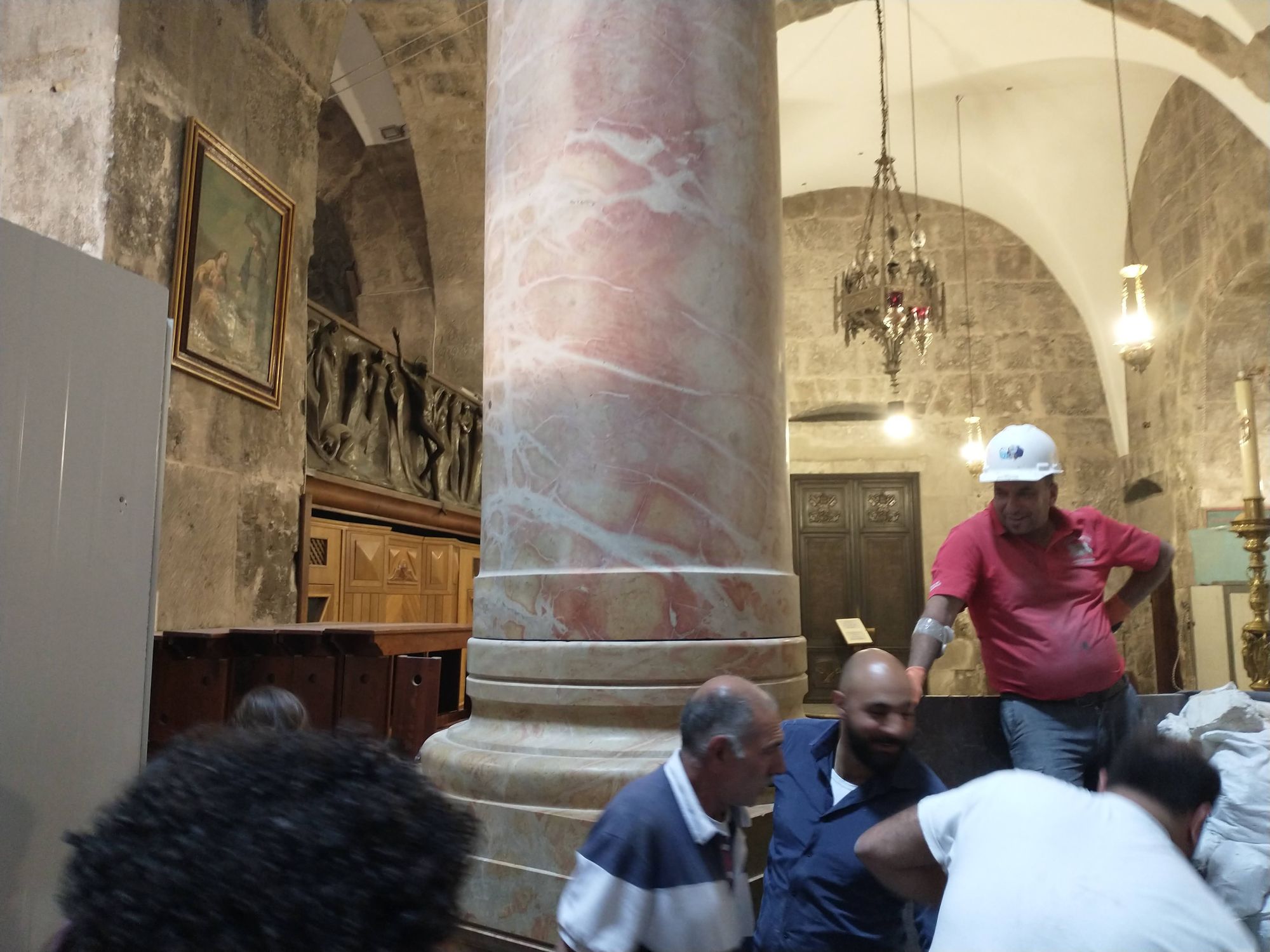
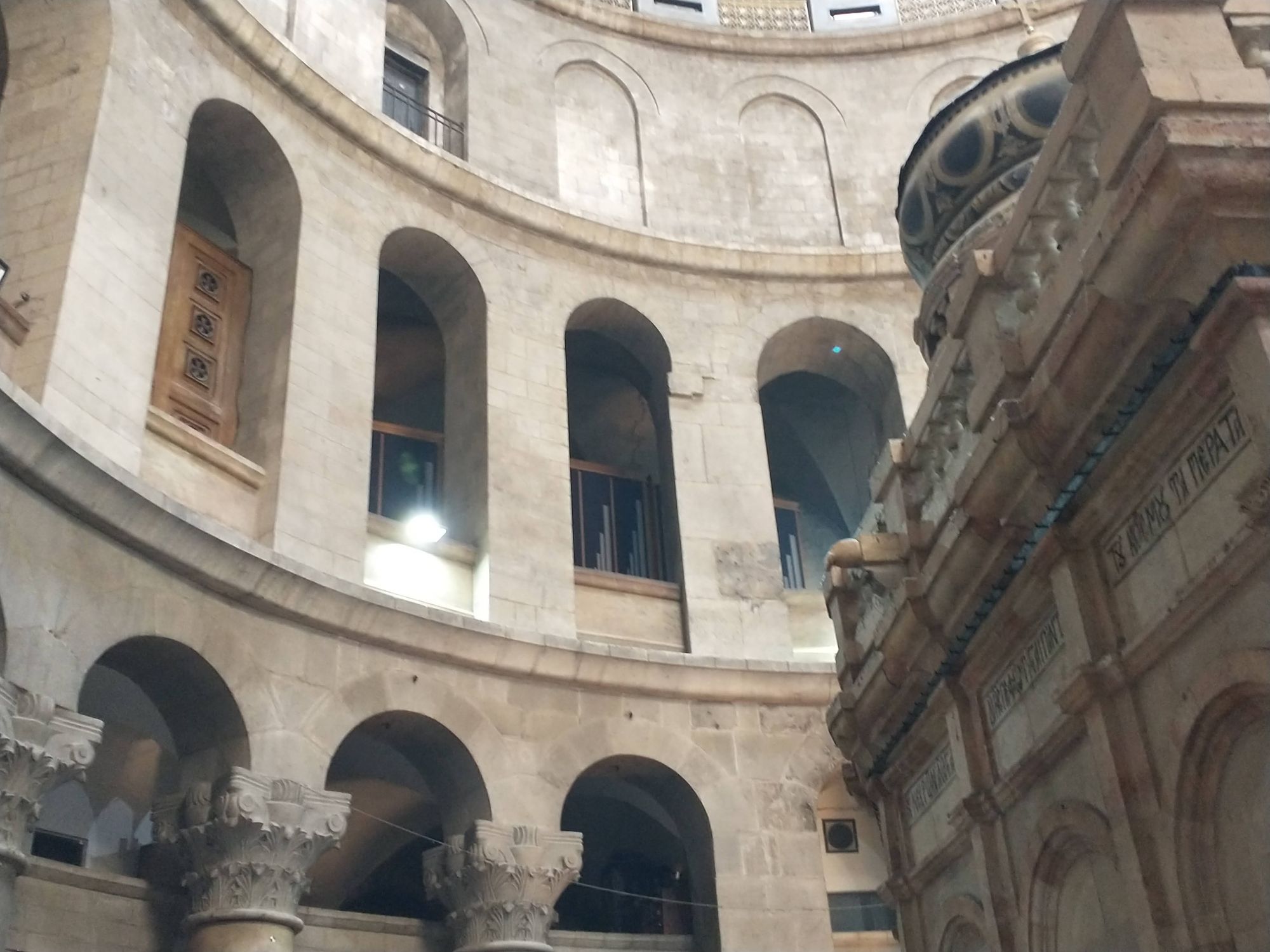
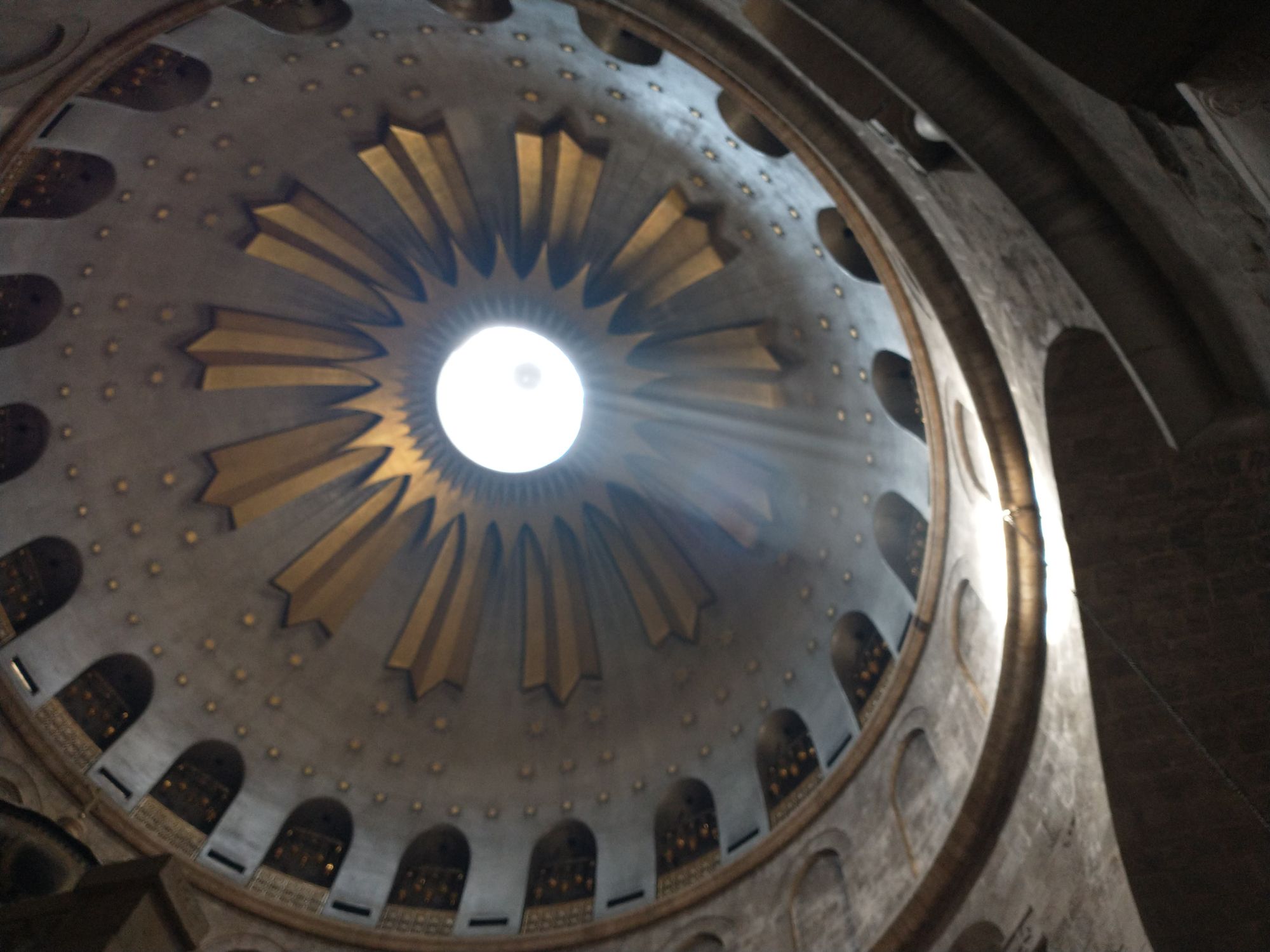
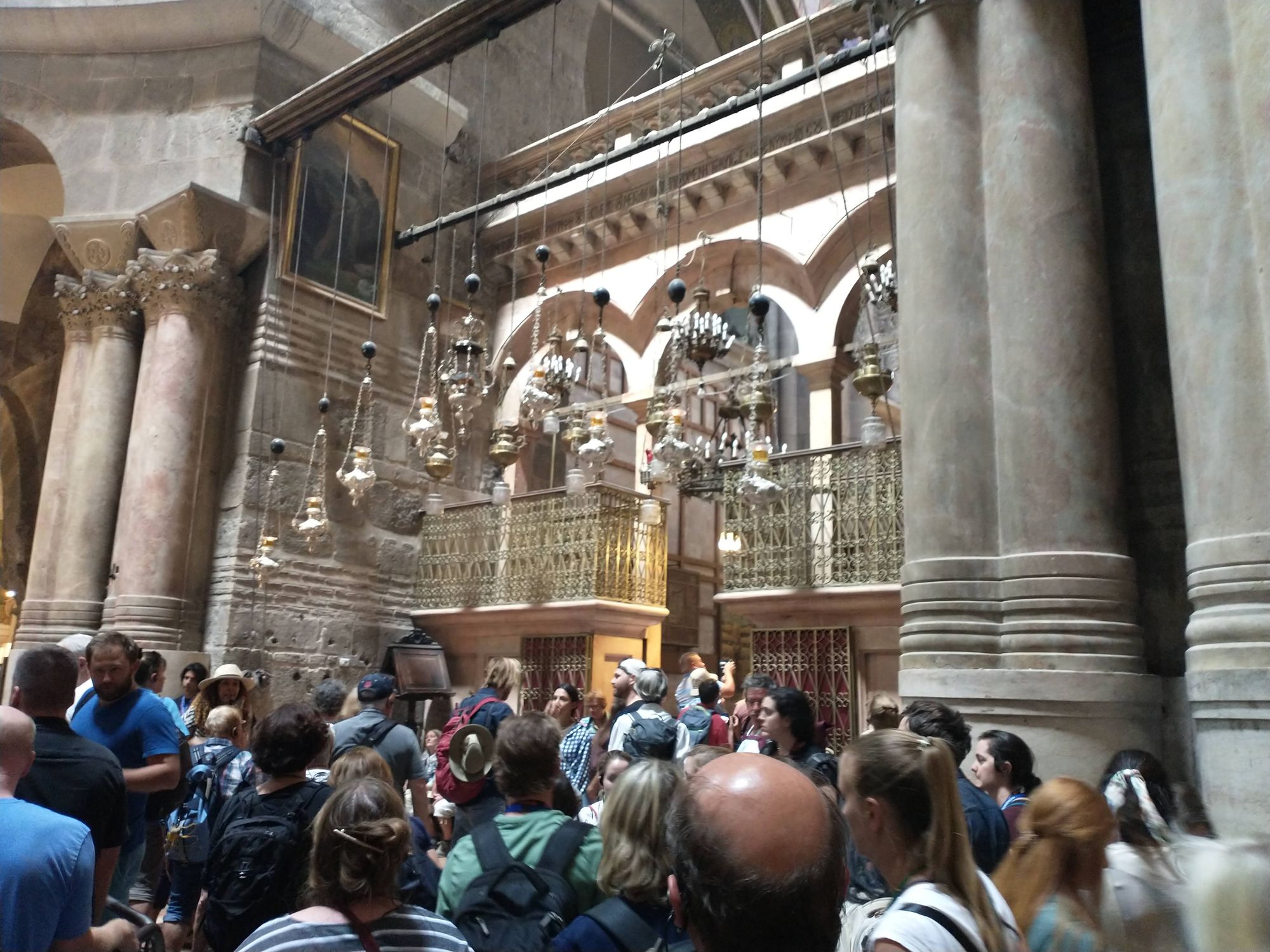
As I got more and more frustrated with the lack of respect shown for the CHS, God convicted me and taught me a few things. I'll write them down in a subsequent post.
I could talk about the Church of the Holy Sepulcher all day, but there are many books, websites, and essays already out there. Instead, I'll show some more pictures and wrap up this post.
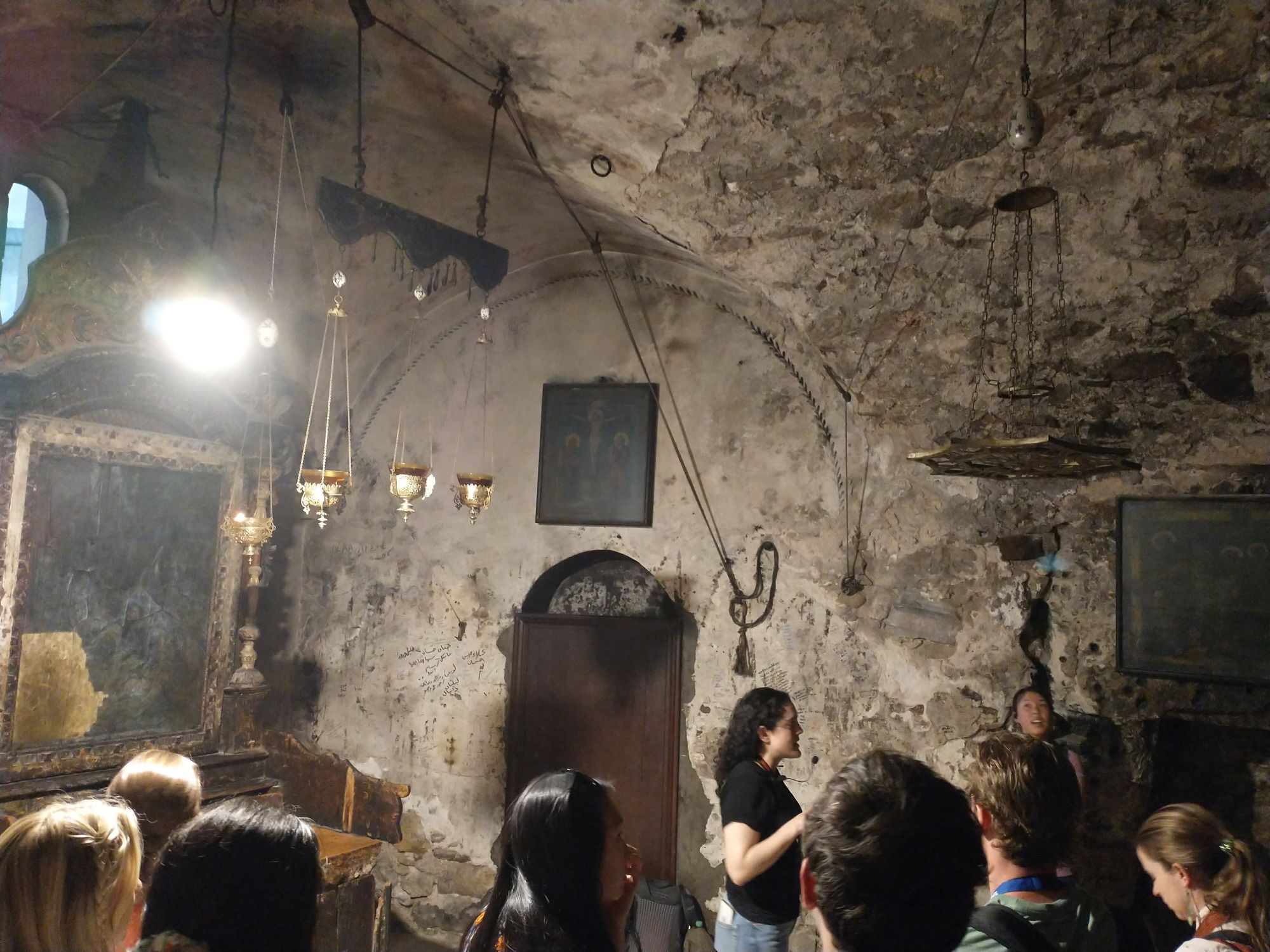
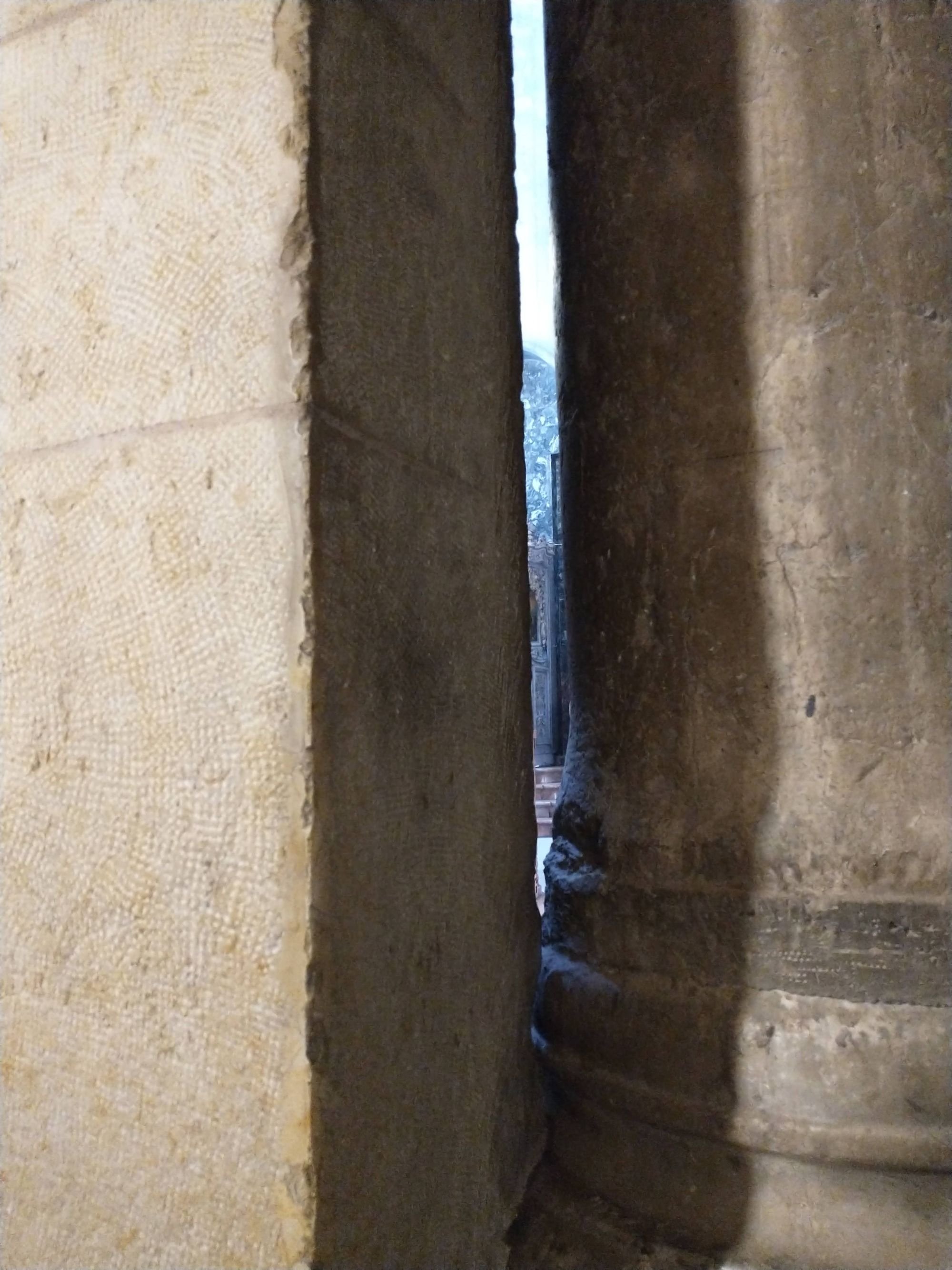
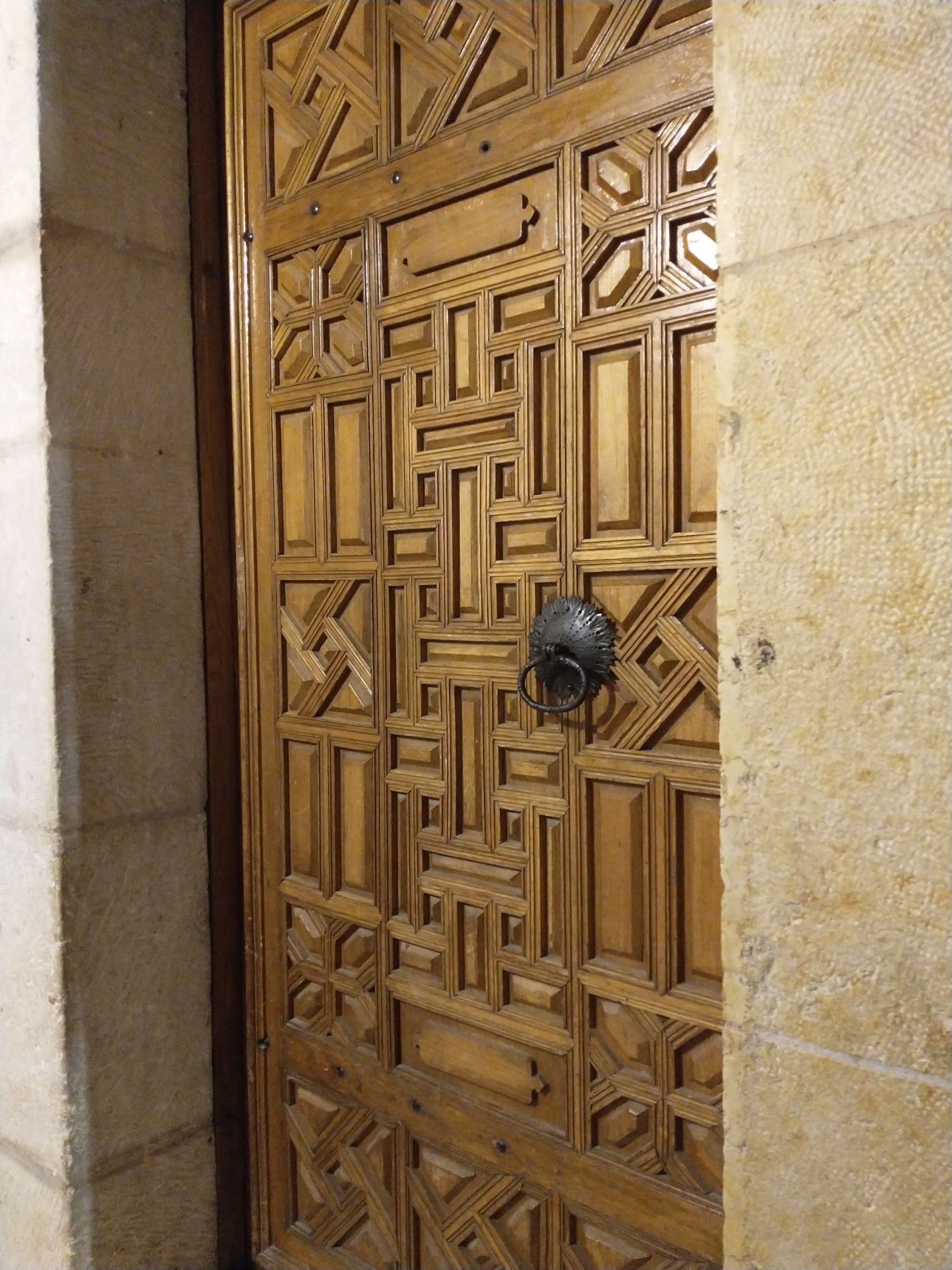
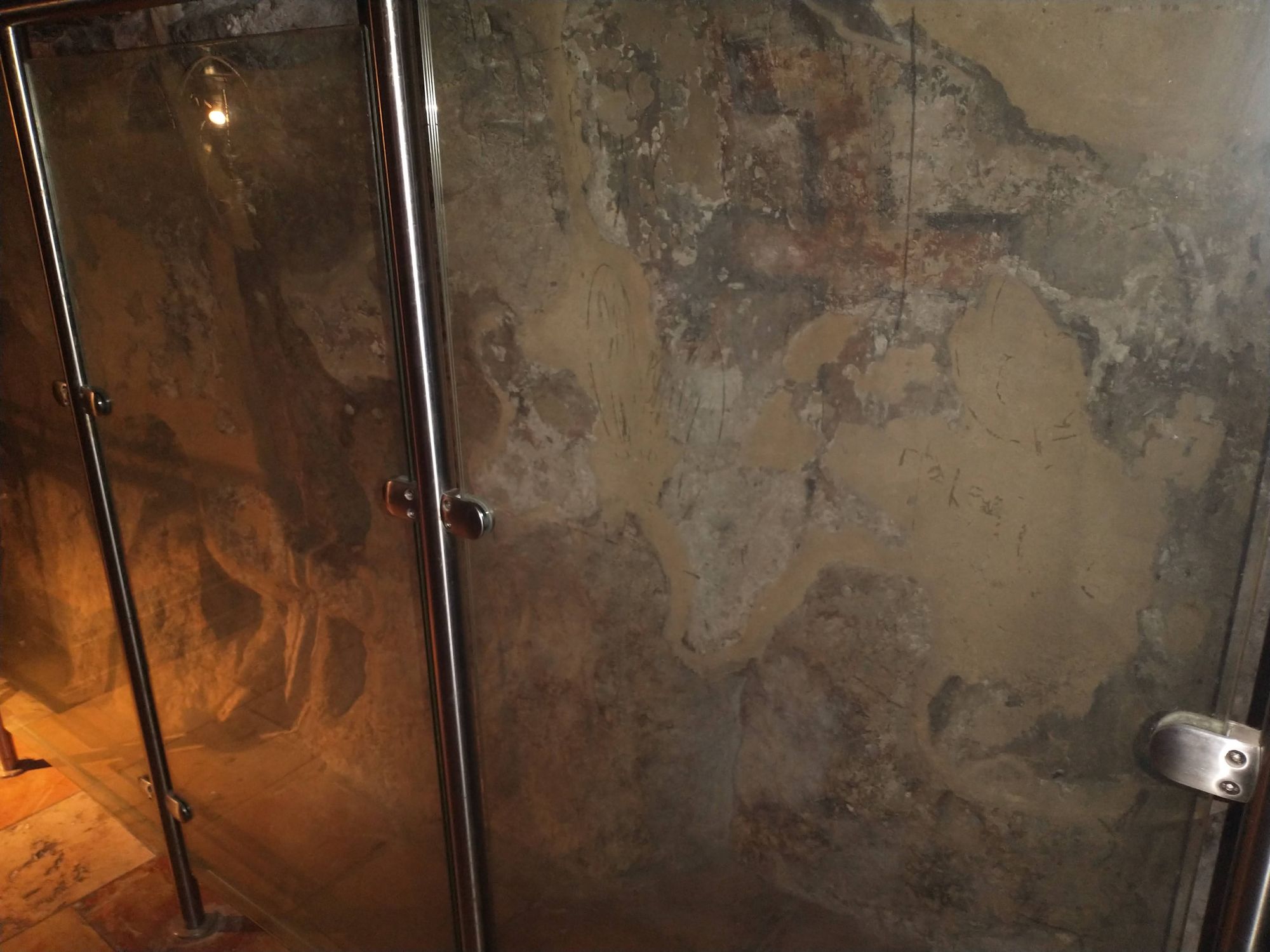
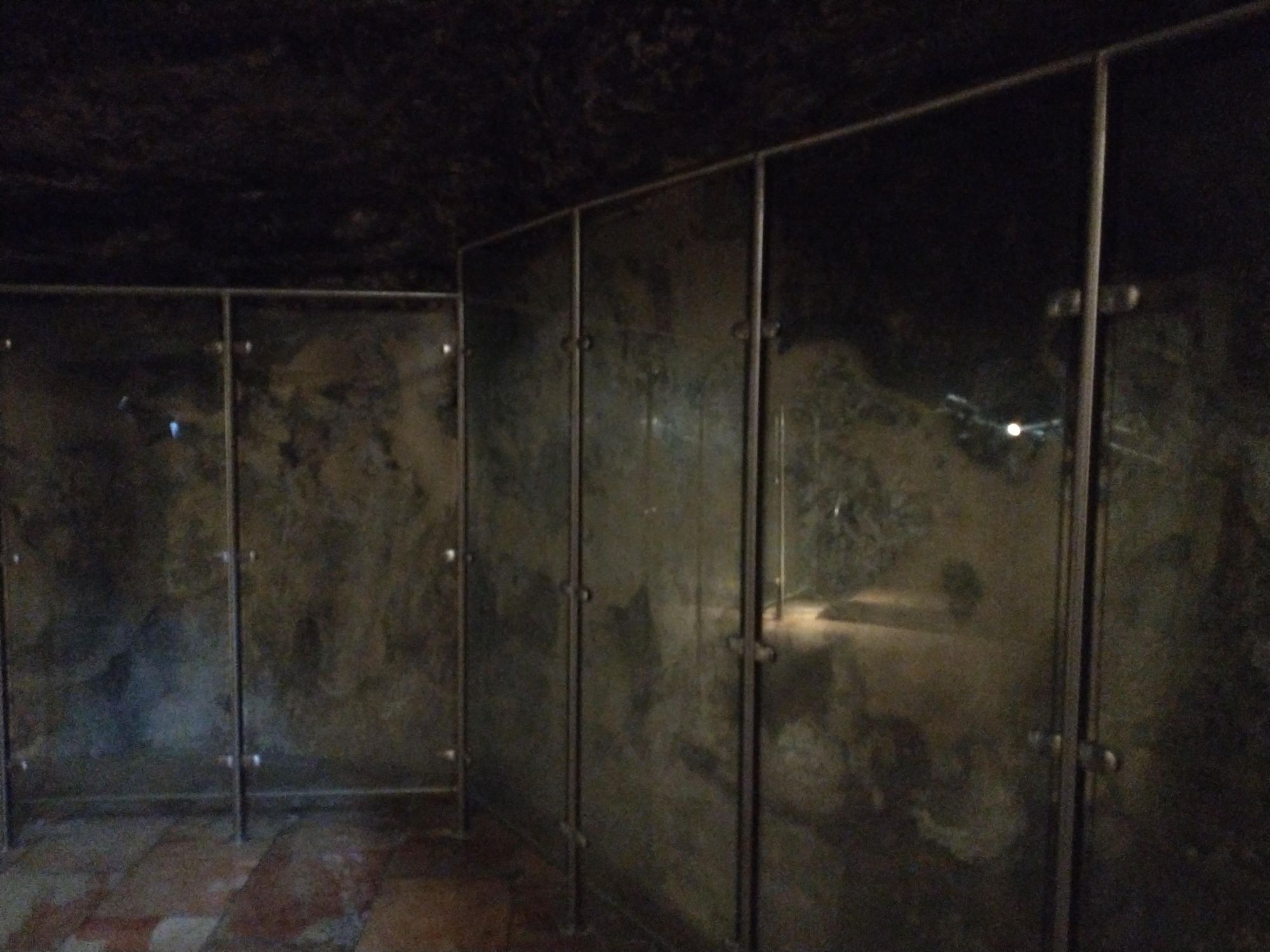
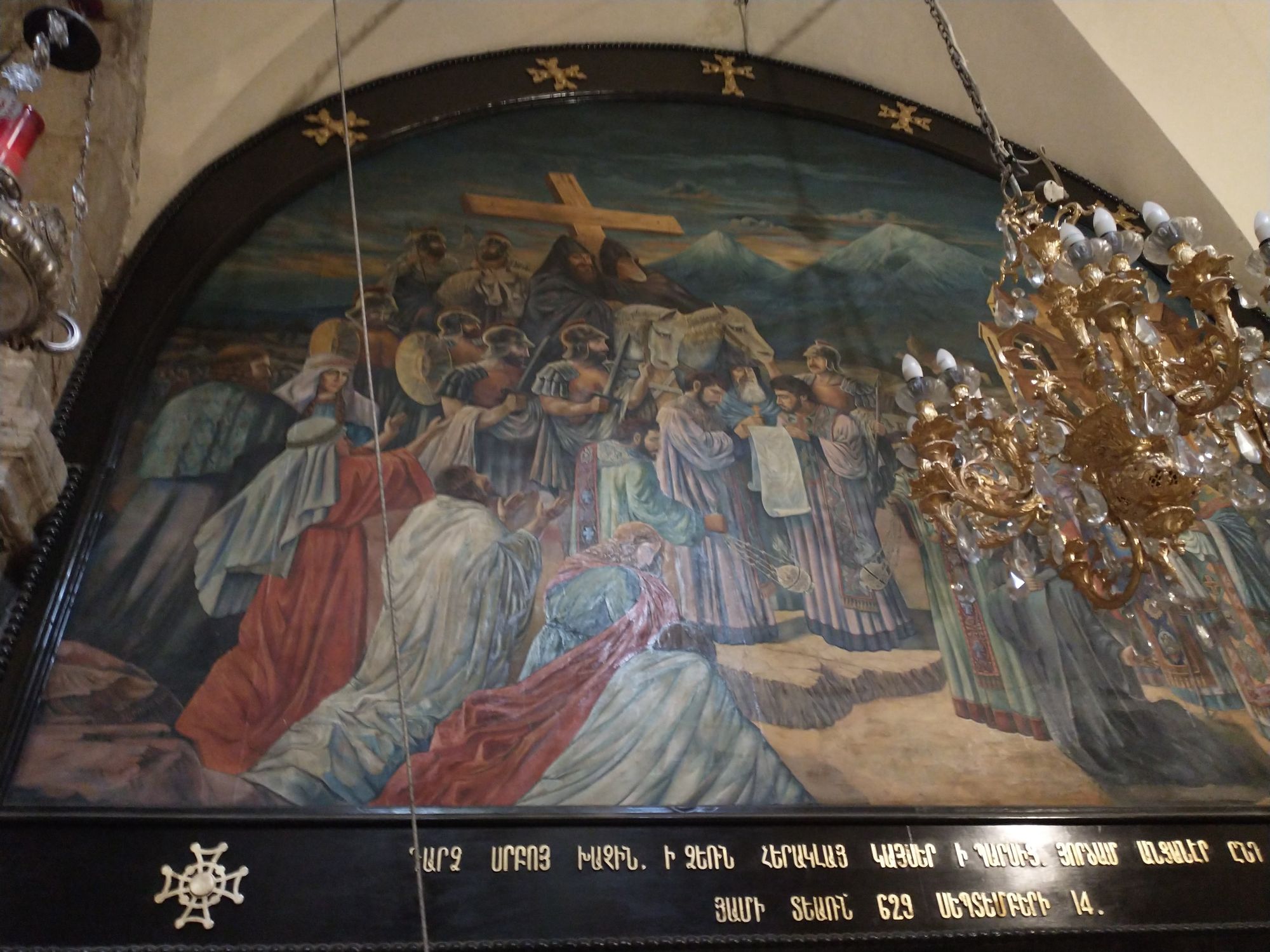
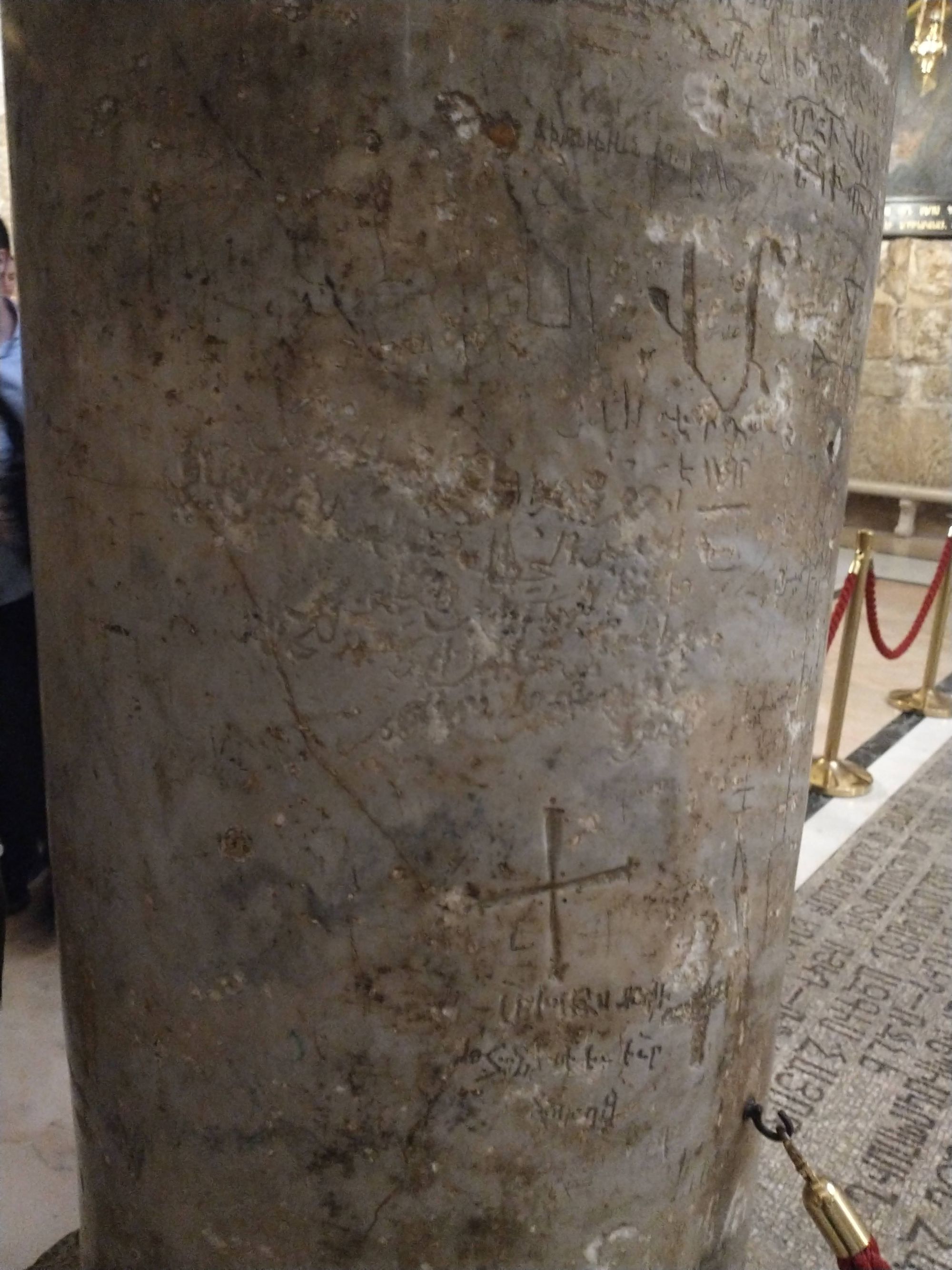
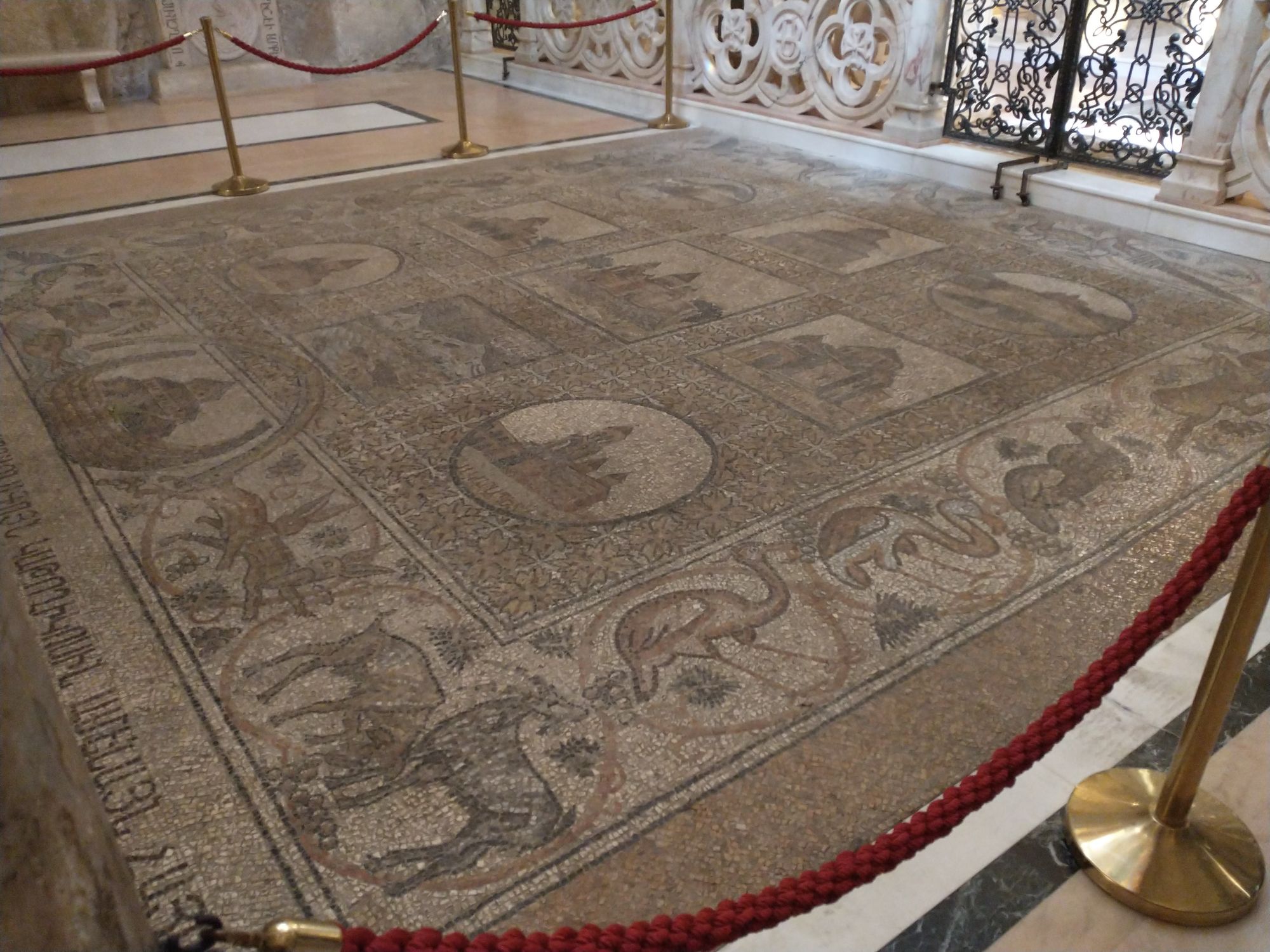
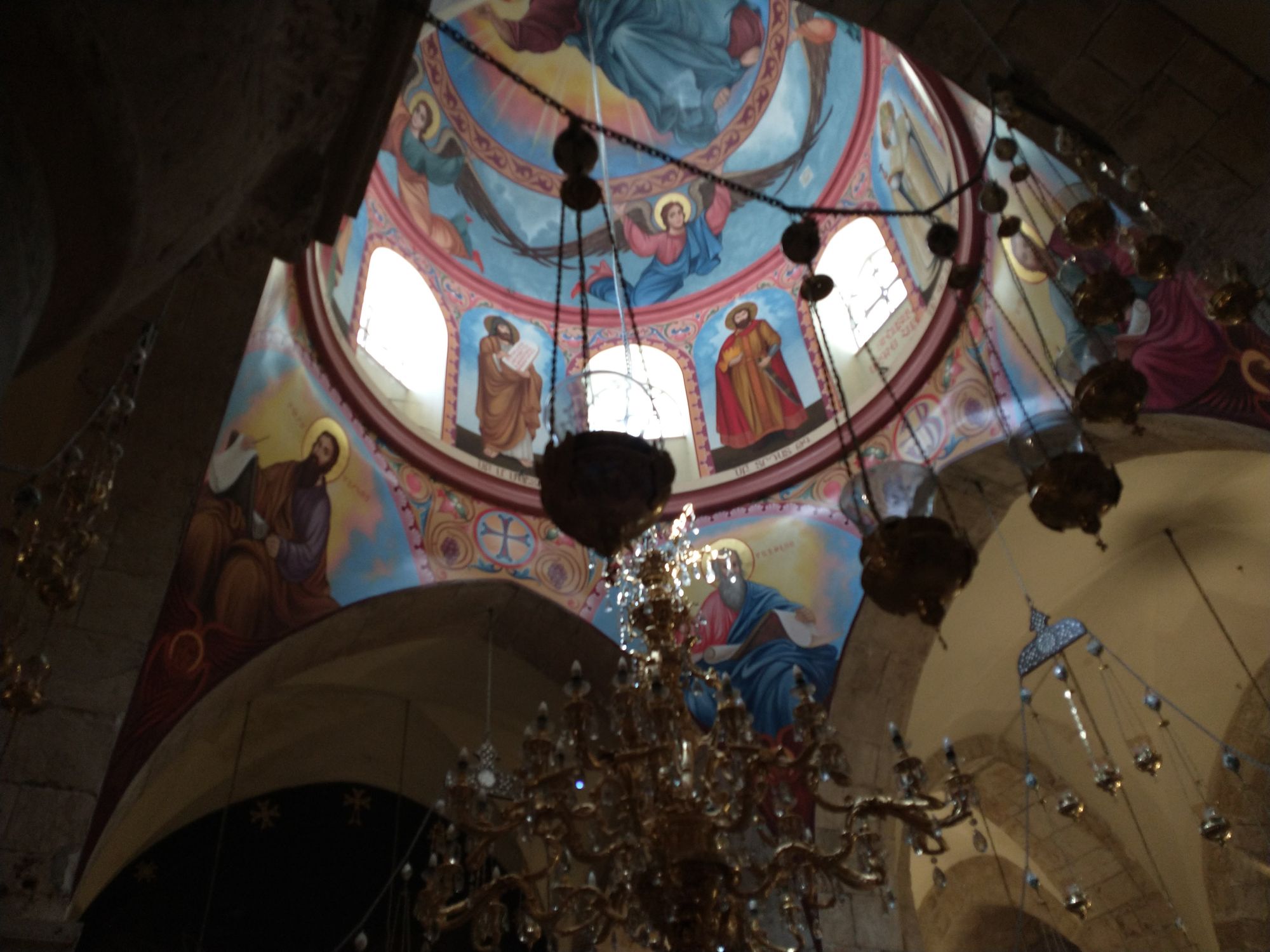
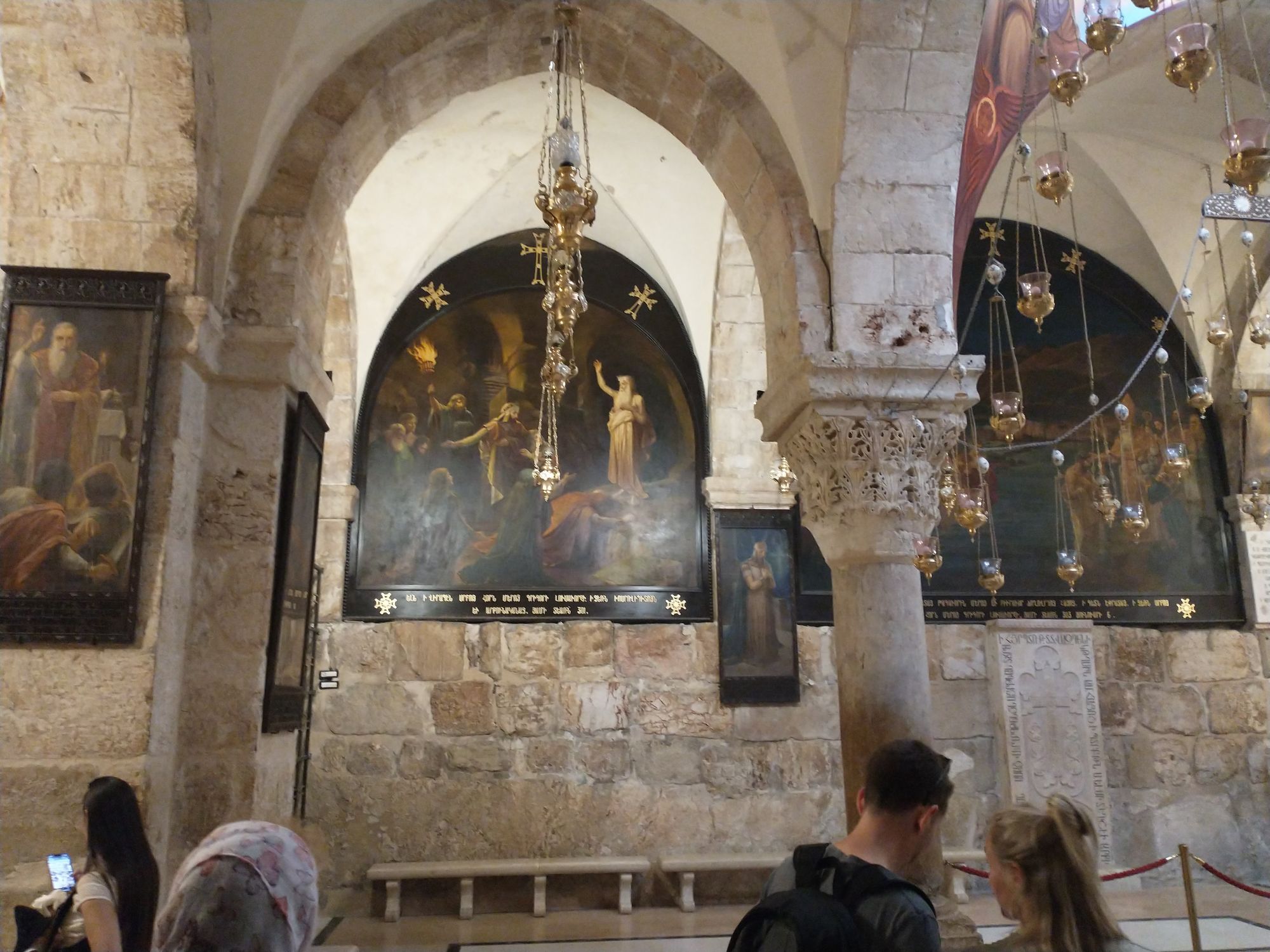
And of course, Jesus loves it when religious leaders turn houses of prayer into centers for commerce, so there's obviously a Holy Sepulcher Store with all the chotskies (or is it tchotchkes?) you'll ever need to commemorate your sacred time at a very holy place.
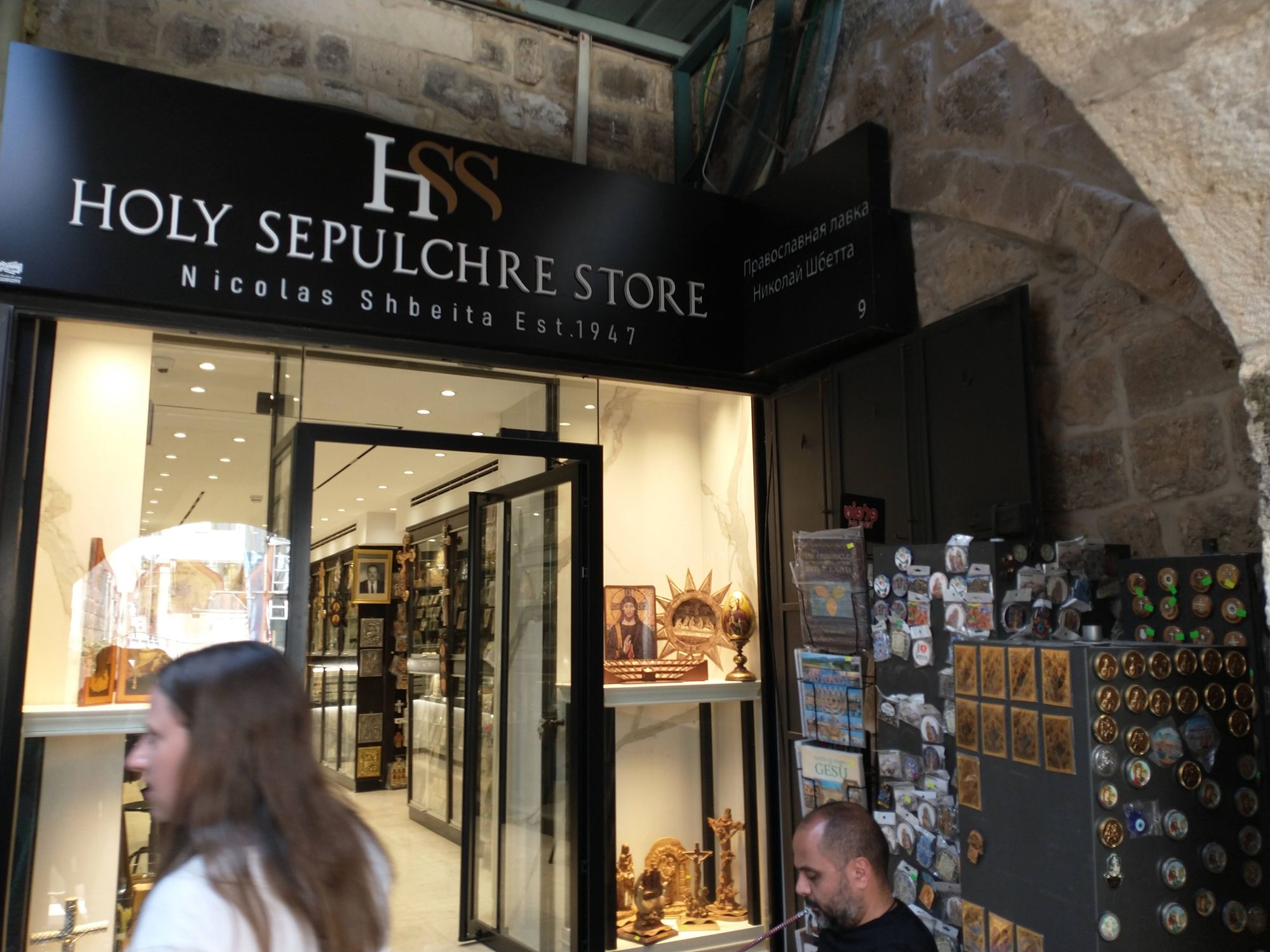
subscribe to get email updates and support my work
Click the link below or the subscribe button at the bottom of the page to support my work and get an email every time I make a new post!


